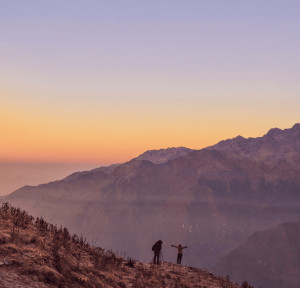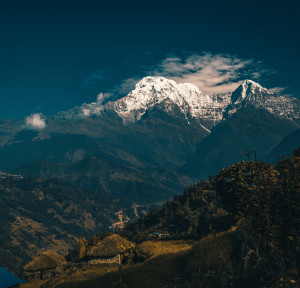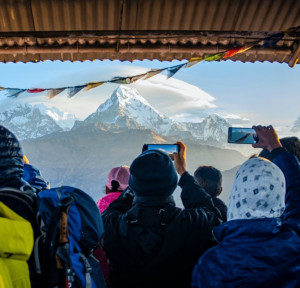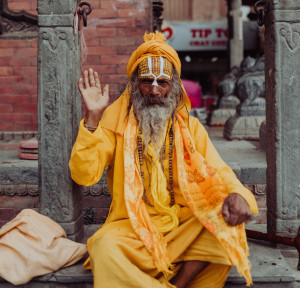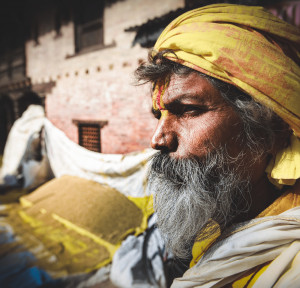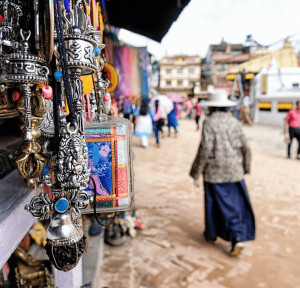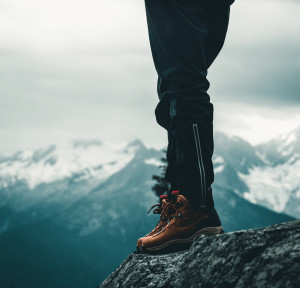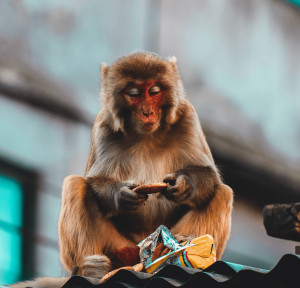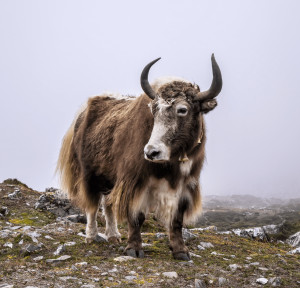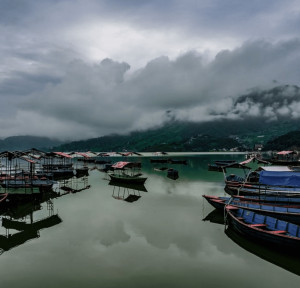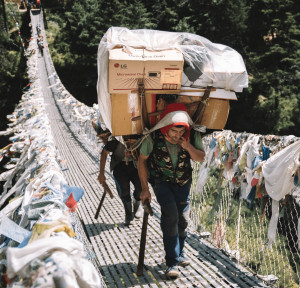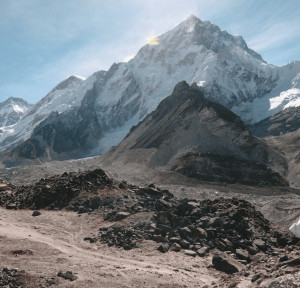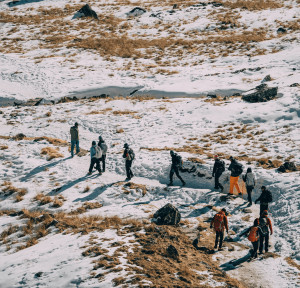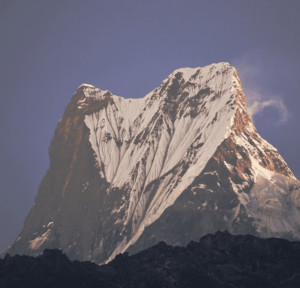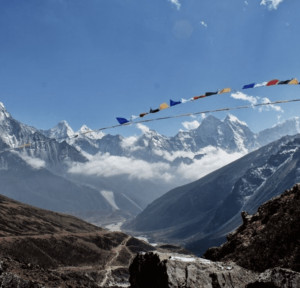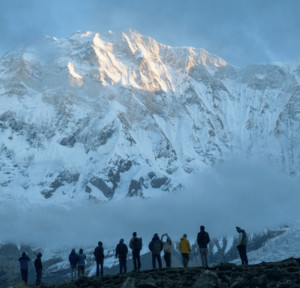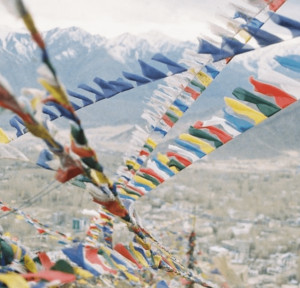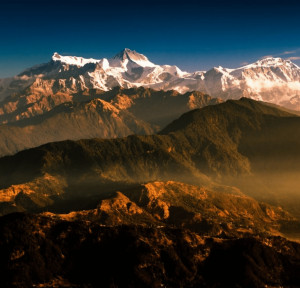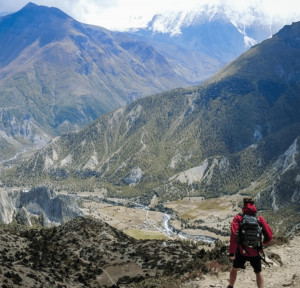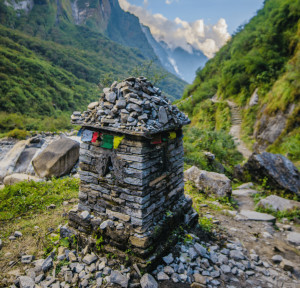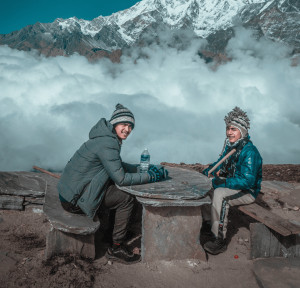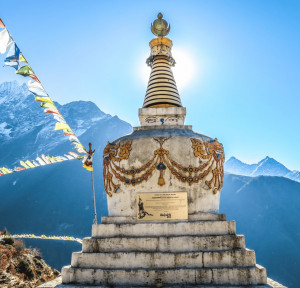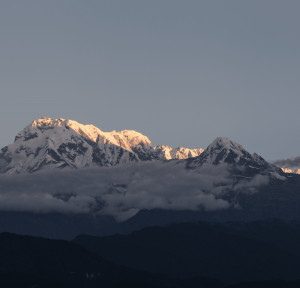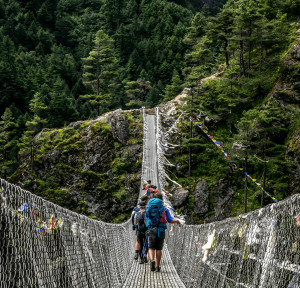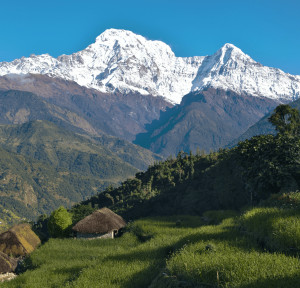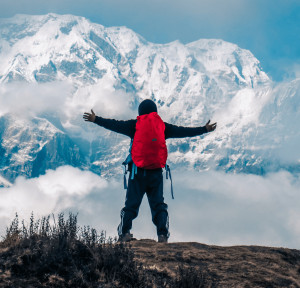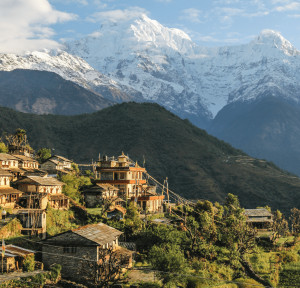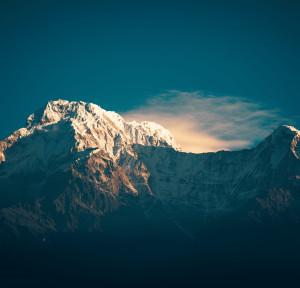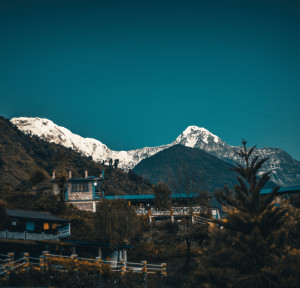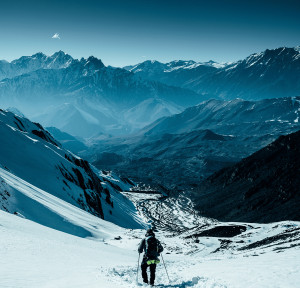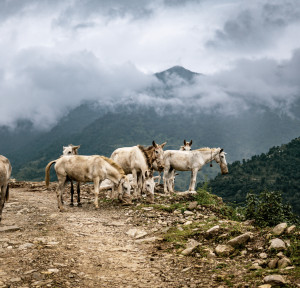Annapurna Circuit Trek
From £1,150Deposit: 10%
Annapurna Circuit Trek is one of the most outstanding trekking circuits in the world.
Annapurna Circuit Trek is one of the most outstanding trekking circuits in the world. Taking approximately 15-20 days, depending on fitness and experience, this route ranges between 160 -240 km long and promises to capture the hearts of the true adventurer. So where does it all begin?
All trekkers must cross the Thorang-La pass which is situated at an altitude of 5416m. Due to the high altitude, strong fitness is required. The Annapurna circuit trek touches Base of Tibetan Plateau at Manang valley after passing through the river valley of Marshyangdi. The view of more than 10 mountain peaks ranging above 6000m can be observed, making it a truly once in a lifetime experience.
The favourable seasons for this trek are autumn (September to November) and spring (March to May). During the autumn and spring season the weather is warm and panoramic views of Mt Annapurna are visible. Other than these two seasons, winter (December, January and February) is very cold, causing for a somewhat more challenging hike, even for experienced trekkers. During these months, expect very harsh weather conditions, including snowstorms. What's more, during summer and monsoon season (June to August), there are high risks of landslides, falls and unfavourable weather encounters.
Annapurna circuit trek is undoubtedly a world-class trekking experience and offers a magical, in-depth, insight into the Himalayan trail circuits and culture - offering panoramic views of flora, fauna, glacier rivers, dramatic waterfalls, natural hot springs and more...
Itinerary
Day 1
Arrival day in Kathmandu (1,300m/4,264 ft):
We welcome you to the great Himalayan Kingdom: Nepal. Upon arrival at the Tribhuvan International Airport, our GoKo representative will welcome you and assist in transferring you to your hotel in Kathmandu.
After you spend a few hours relaxing and a getting refreshed, you will be invited to a welcome dinner in a typical Nepalese restaurant in the heart of Kathmandu city. Here a quick briefing about your trip will take place before you return to your prearranged hotel for the night
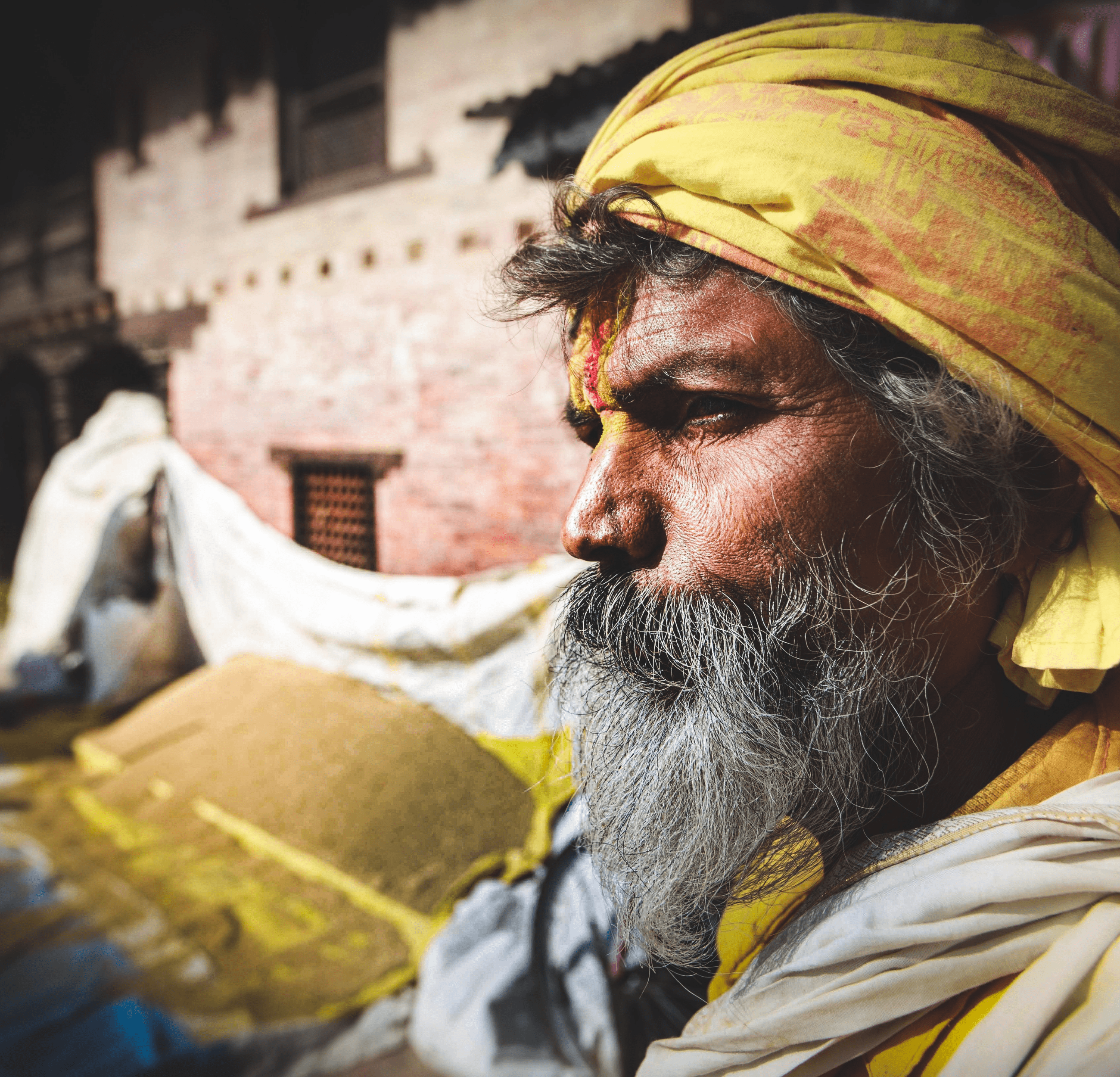
Day 2
Trek Preparation:
Today, your tour manager will come to meet you at the hotel at 10.00 AM. They will brief you again about the trip in detail, introduce you to your guide and provide you with all the correct documents.
You will be free in the afternoon and have time to manage your trek preparation. Our guide will meet you at your hotel at six o'clock in the evening then take you for a welcome dinner which will consist of a traditional Nepali culture show. After having dinner, we will drop you at the hotel where you will spend your second night.
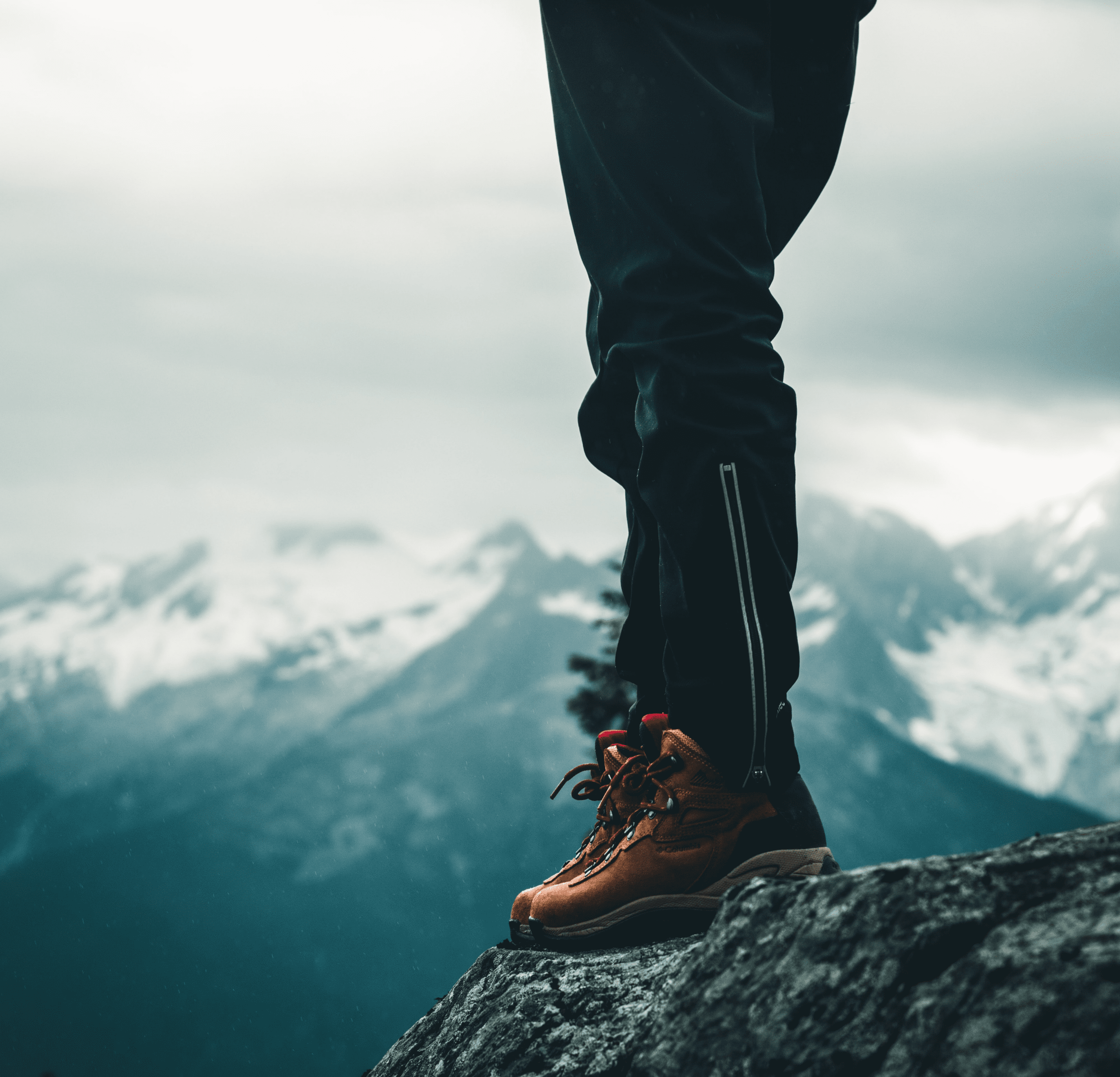
Day 3
Drive to Besisahar (830m/2,723ft), 6-7 hrs drive:
This morning we leave Kathmandu for our long trek to Annapurna. You will be driven by local bus to Besisahar, passing the beautiful Nepalese countryside.
Besisahar is a big town and district headquarter of the Lamjung District. Here you have the afternoon to explore the surrounding area and overnight at the hotel.
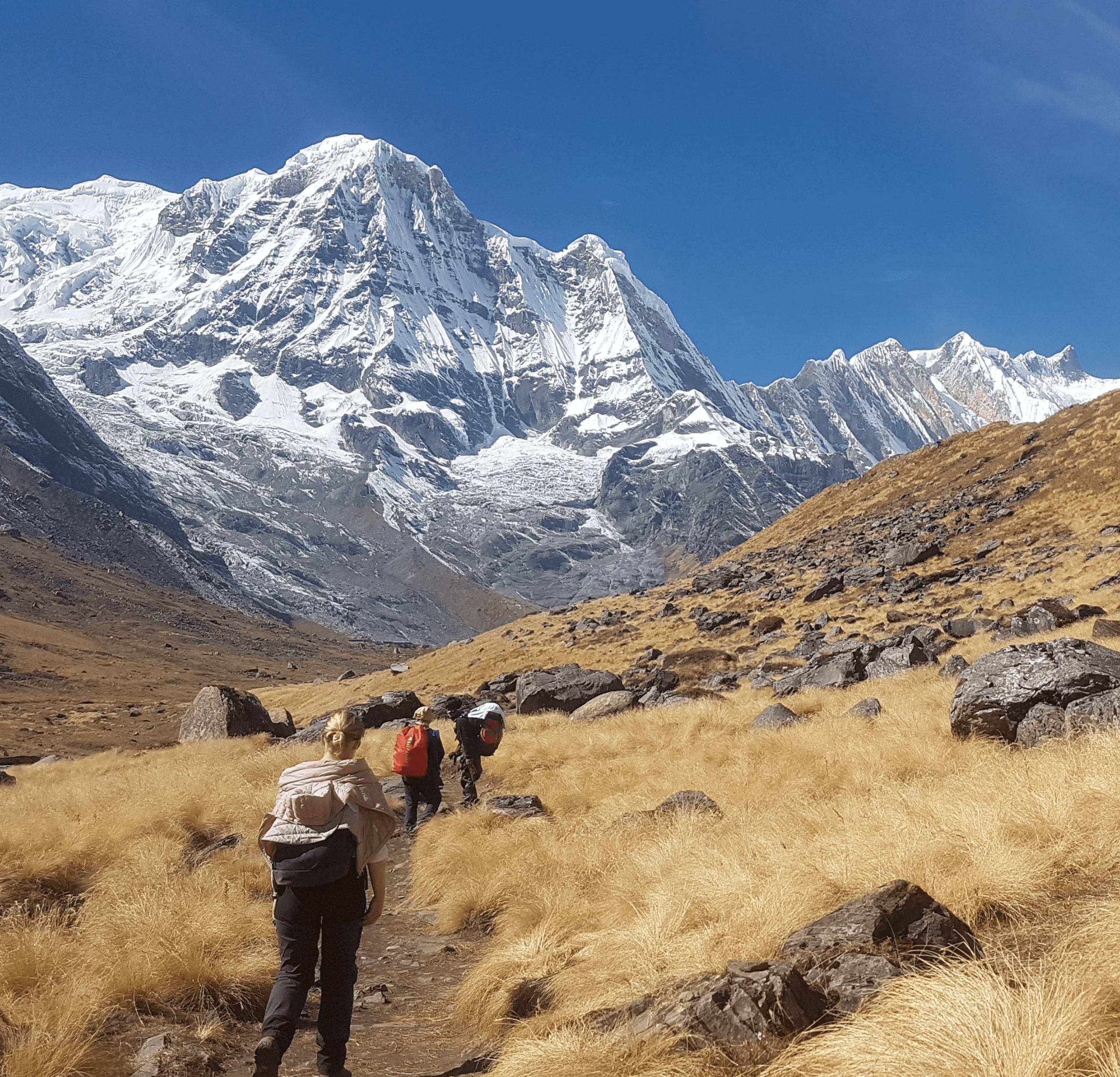
Day 4
Trek to Besisahar (1,310m/4,298ft), 5-6 hrs walk:
Today, we begin our trek from Besisahar which offers a fine view of Hiunchuli and Peak 29 (Ngadi Chuli).
The trek begins by crossing the local bamboo bridges that connect you with Bhulbhule. From Bhulbhule you will continue to Ngadi village for lunch - passing through waterfalls, river banks and mountain views. Finally, after a solid 5/6 hours hiking, you will reach Bahundanda for an overnight stay.
This is a beautiful village on the top of a mountain and if the sun is still up, you may have a chance to explore the local village and schools depending on time.
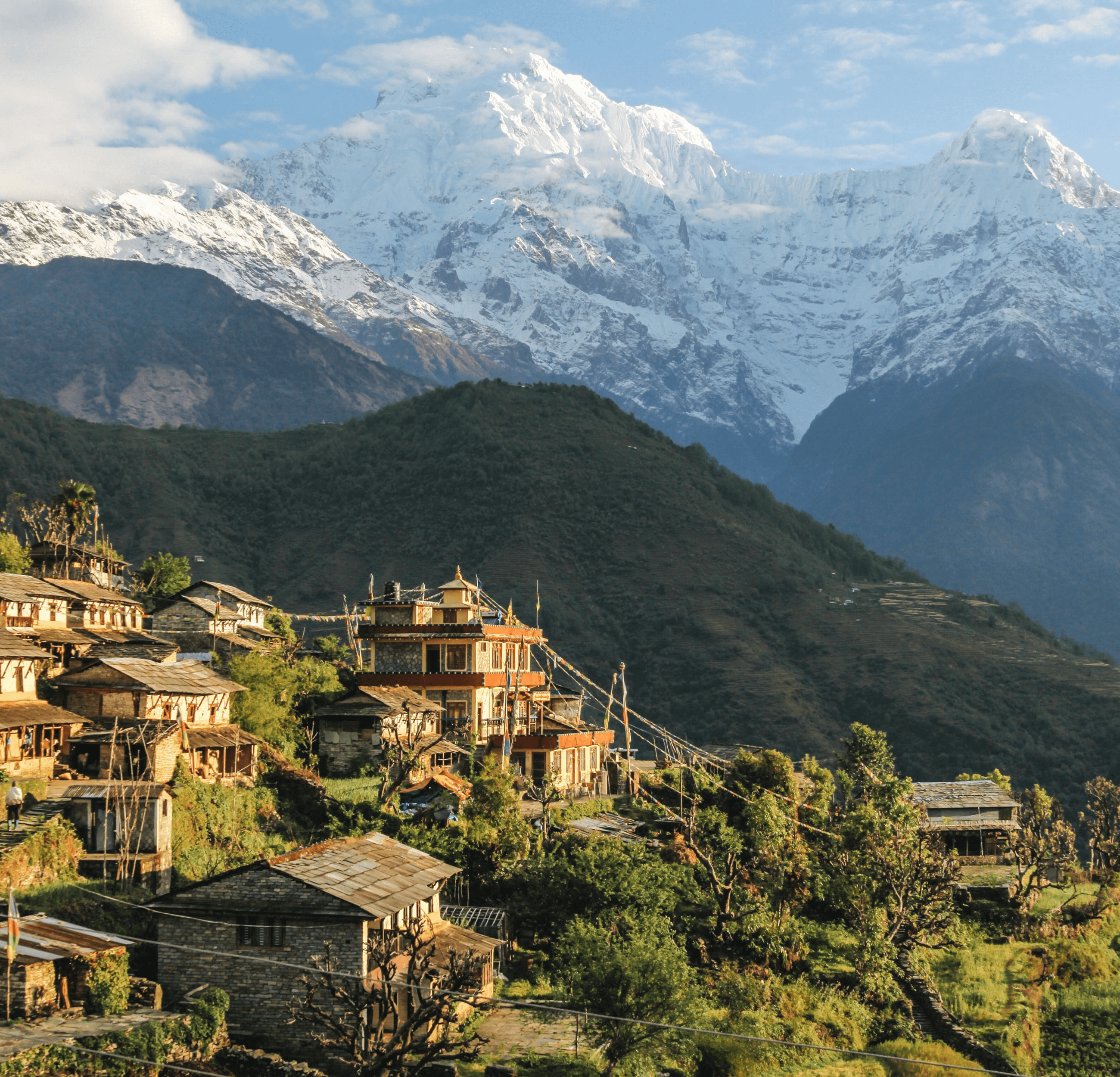
Day 5
Trek to Chamje (1,410m/4,626ft), 5-6 hrs walk:
After breakfast, the trek descends to Syange village. A short downhill walk brings you to Syange village after crossing a long suspension bridge.
From here, the trek continues gradually uphill for the rest of the afternoon. Once you have crossed the river and made your way up the last steep hill, you will arrive in Jagat for a lunch stop. After lunch, you will have about another hour walk on a rocky path which offers long scenic waterfall views and mountain peaks.
After crossing the river again, you finally reach Chamje for an overnight stop.
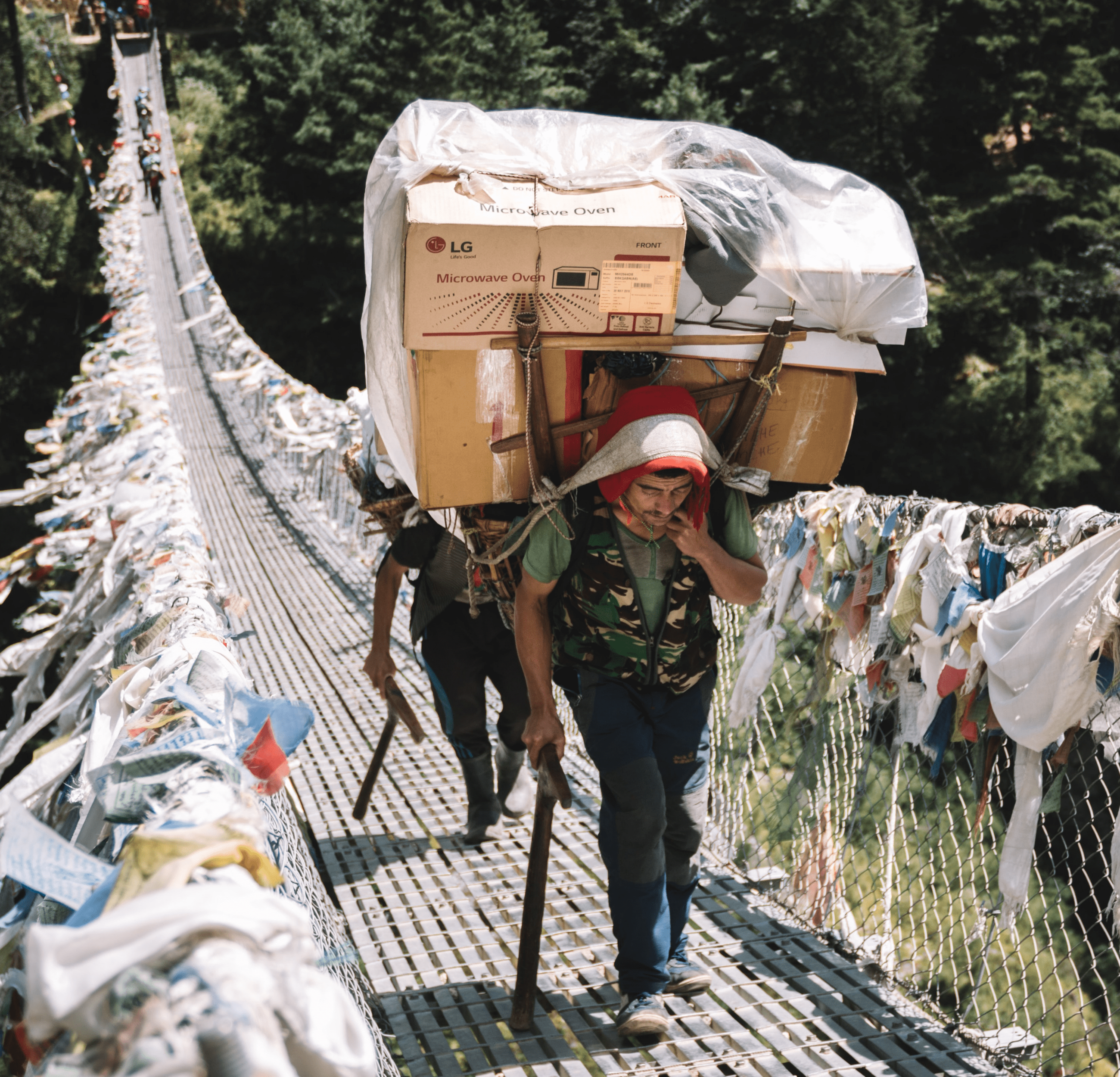
Day 6
Trek to Dharapani (1,960m/6,430ft), 5-6 hrs walk:
From Chamje, a short walk brings to a suspension bridge over the raging Marshyangdi river. After crossing the bridge, you embark on another steep climb for another 2-3 hours until you reach Tal. Tal village is situated on the gorge-valley by the side of the river Marshyangdi and decorated with beautiful waterfalls & a sandy spread river.
As we continue the trek, we move upstream towards Dharapani, conquering rocky trails, crossing suspension bridges and passing small hamlets and teashops, before eventually arriving at Dharapani.
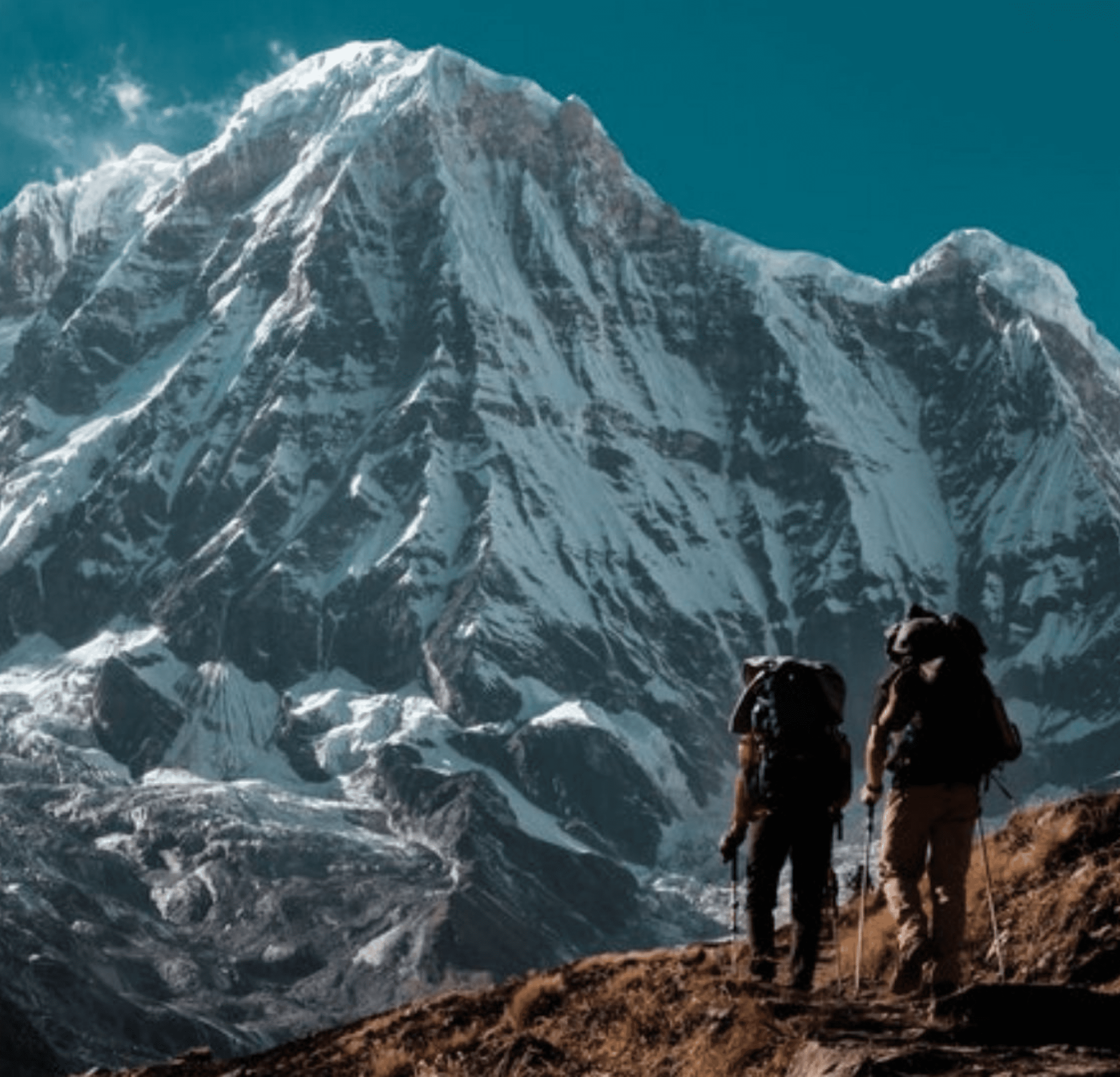
Day 7
Trek to Chame (2,710m/8,891ft), 6-7 hrs walk:
We continue our trek further to Chame. From here you will notice the vegetation, people and landscapes change as the air gets cooler.
The trail then climbs through pine forests to Bagarchhap - the first village on the trek with typical Tibetan architecture. After a pleasant walk to Bagarchhap, the altitude slowly gains as we enter the alpine region - passing through farms, orchards and beautiful pine forests. With views of towering peaks including Lamjung and Annapurna II, the trail follows the river of Marshyangdi upstream, passing the villages of Latamanang and Koto before arriving at your destination; Chame - The headquarters of the Manang district.

Day 8
Trek to Pisang (3,200m/10,496ft), 5-6 hrs walk:
The trail leads from the one side of the river on the northern bank and passes through pine woods and small communities until you reach the orchard village of Bhartang (famed for its apple gardens).
Continuing on the gradual path, you cross the bridge and instantly into a short steep climb through more pine forests until you reach the top of the ridge in Dhukur Pokhari for lunch. After walking out of the tree line, a great view of Pisang peak and Chulu peak can be seen.
After an hour of gentle descent, you arrive at the windswept village of Pisang for the night. While you are resting here you can visit some of the Tibetan style houses and a monastery with panoramic views of the Annapurna range and valley.
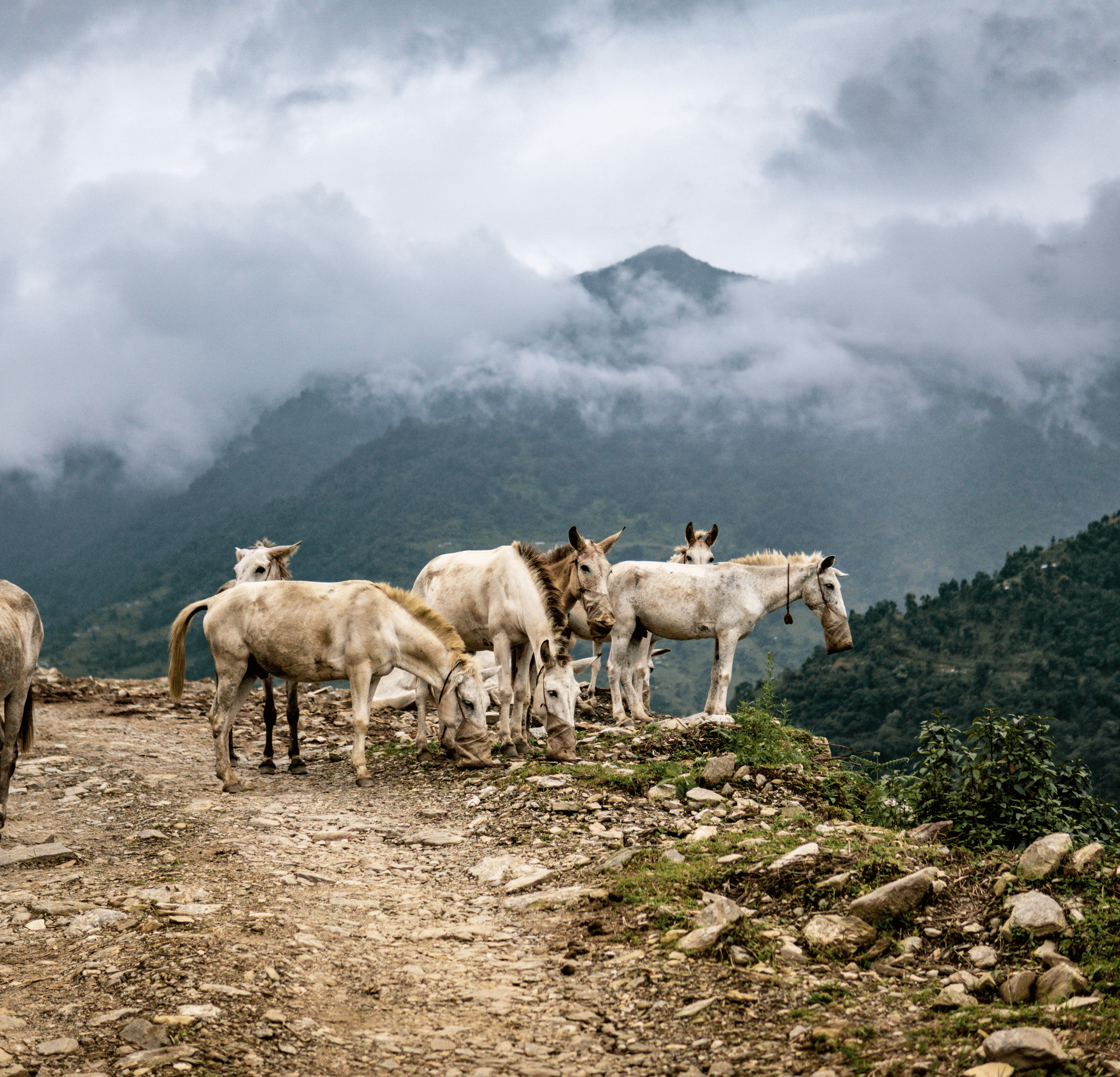
Day 9
Trek to Manang (3,500m/11,482ft), 4-5 hrs walk:
The trek starts with a pleasant walk through pine forests. The walk climbs gently up for half an hour and once you reach the top, you get your first view of the Manang valley. This grand spot offers spectacular views of multiple valleys, Humde villages air-strips and the great peaks of Gangapurna, Annapurna II & III, Tilicho, Chulu East and Pisang Peak.
The walk forward to Humde is pleasant and joins with the Tibetan village; Braga. Here the monastery boasts a fantastic range of statues, Thanka paintings and the religious manuscripts.
From here it is only an hour walk to Manang.
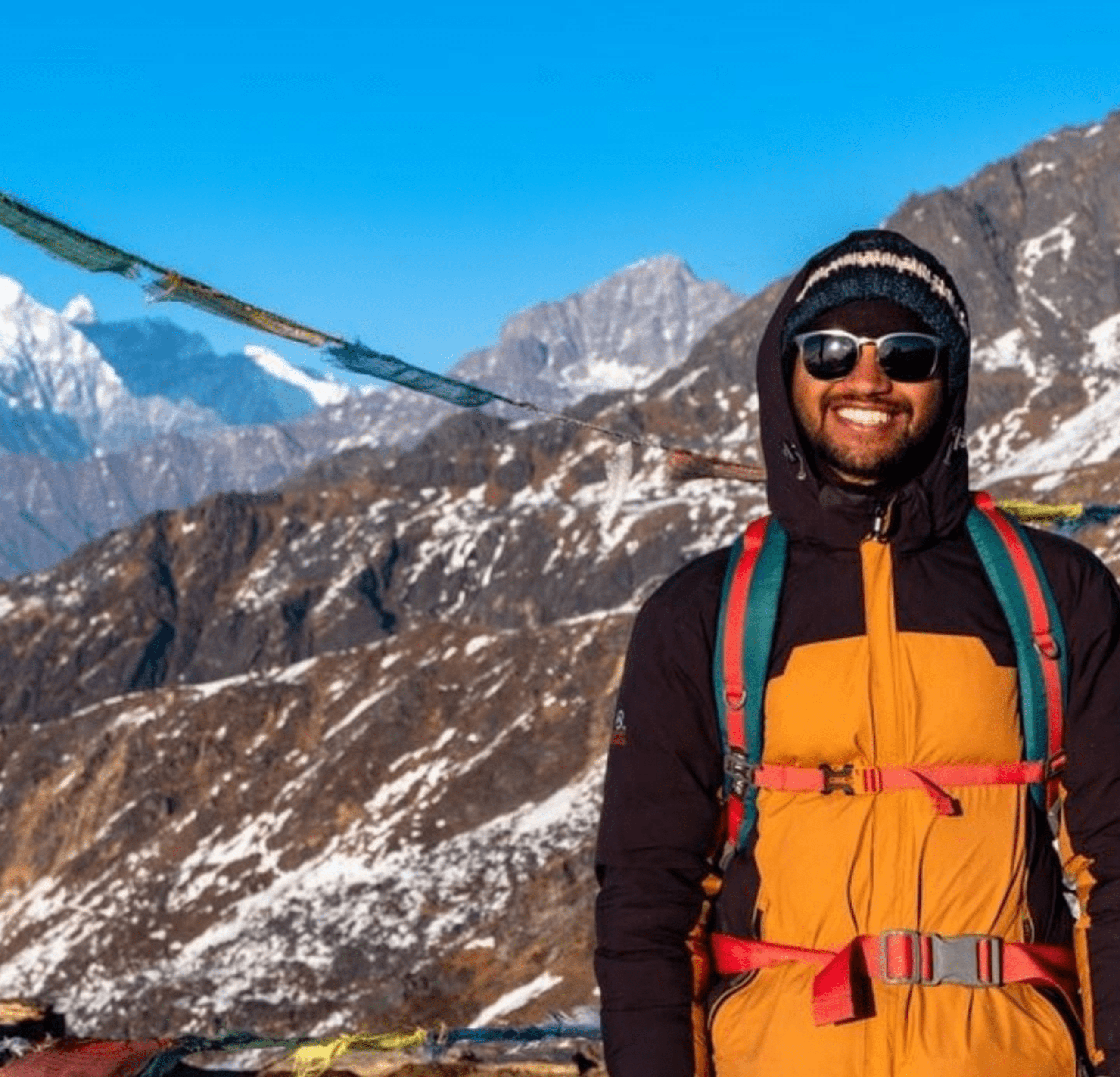
Day 10
Acclimatisation day at Manang (3,500m/11,482ft):
Today its time to rest and to acclimatize to your surroundings.
The village consists of about 500 flat-roofed houses, which offers a picturesque setting amongst the spectacular backdrop of -Annapurna II, Annapurna III (7,555 meters), Gangapurna (7,454 meters), Tilicho (7,132 meters), Chulu West (6,583 meters) and Chulu East (6,059 meters).
After exploring and relaxing in Manang, you are encouraged to visit the Himalayan Rescue Association and go to a movie showing.
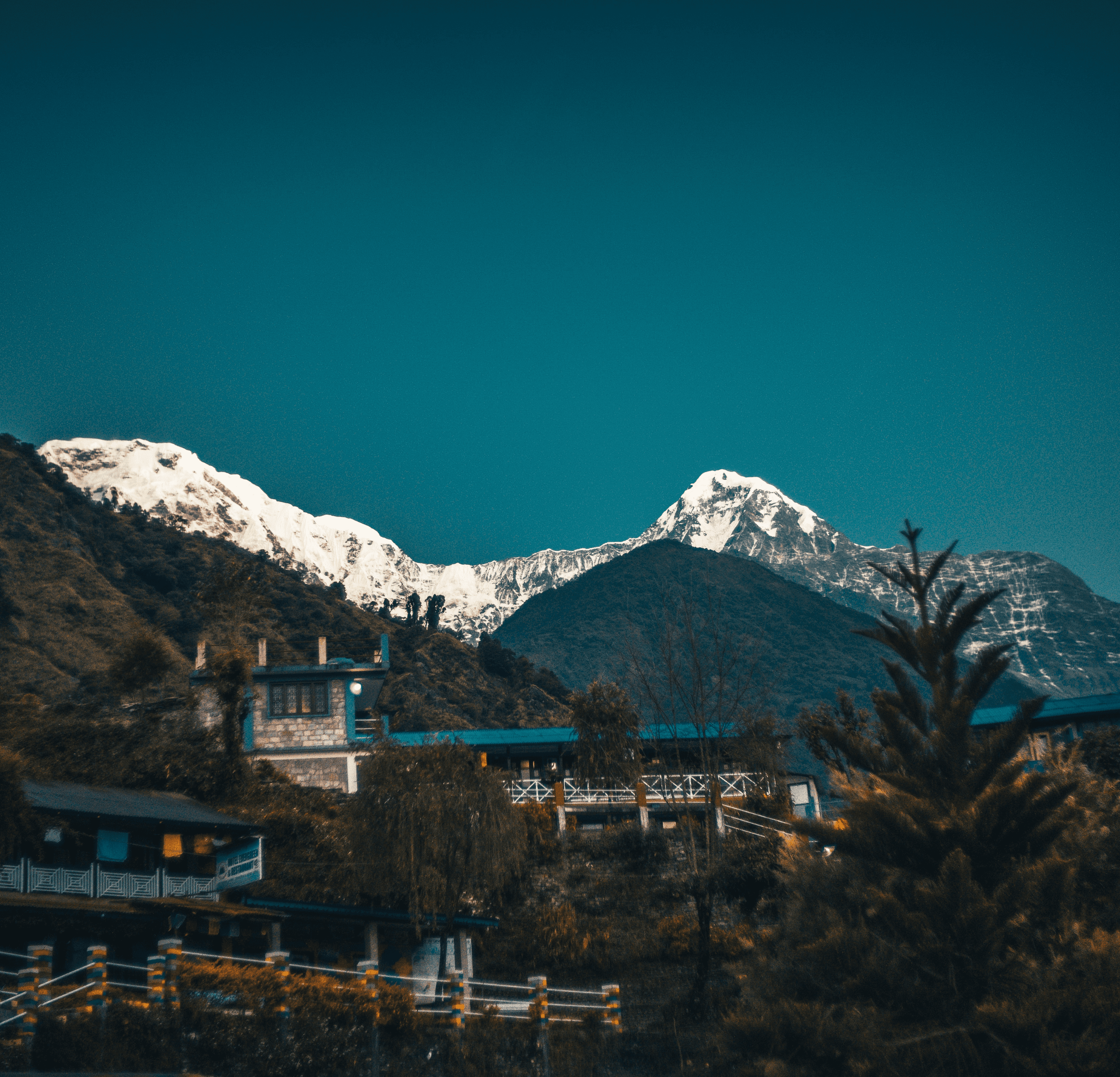
Day 11
Trek to Yak Kharka (4,110m/13,484ft), 3-4 hours walk:
After a wonderful time in Manang, the trail climbs slowly to Tenki Manang. The track winds up offering spectacular views and you get the chance to see the beautiful juniper bushes for the first time - the only surviving vegetation around this region.
2 hours of extra walking will bring you to Yak-Kharka.
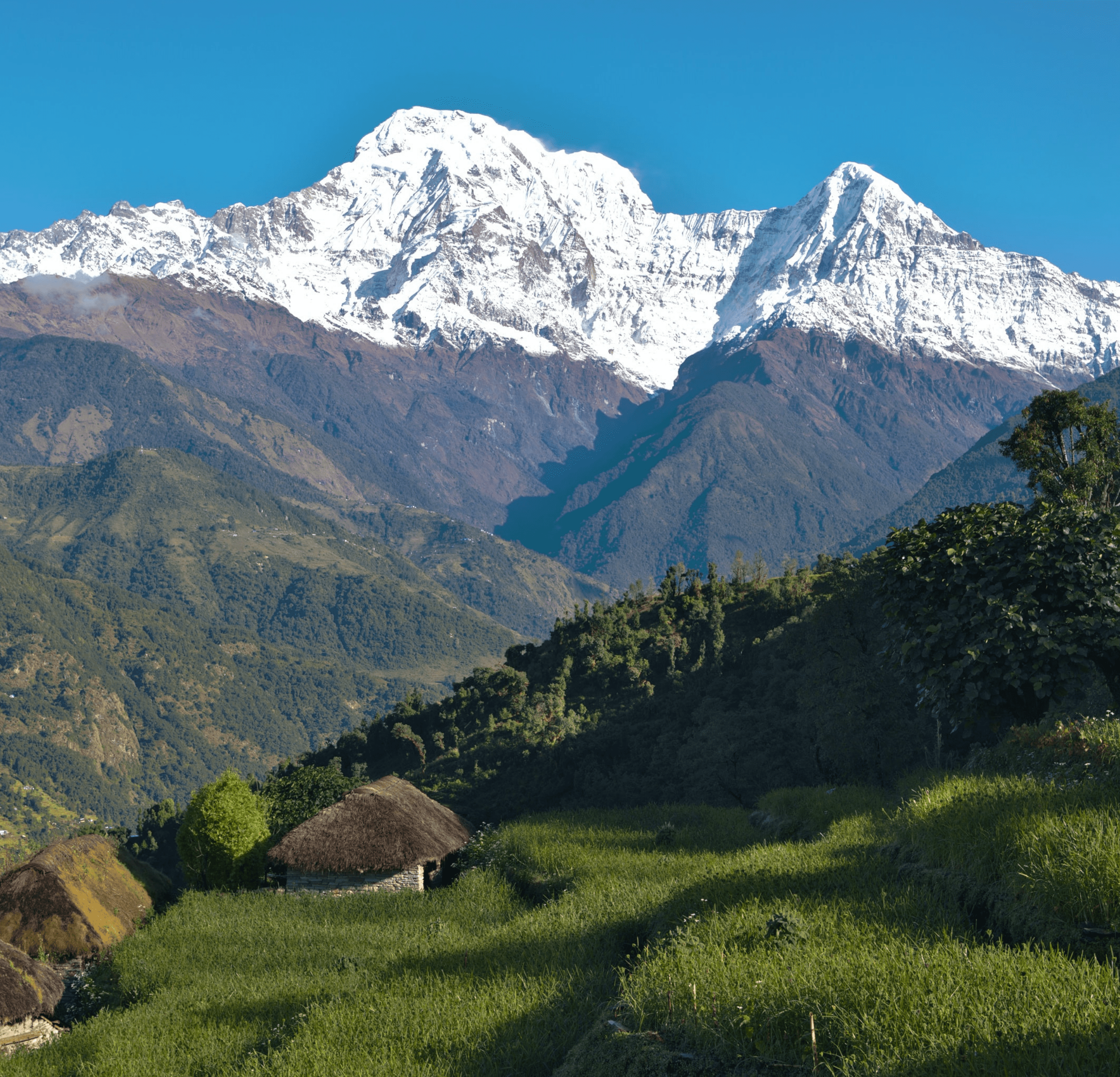
Day 12
Trek to Throng Phedi (4,400m/14,432), 3-4 hrs walk:
We start our trek with a slow-paced walk to Phedi. We still have the same amazing landscape views, so soak it in.
After an hours walk, you reach Ledar and continue to climb the east bank of Jorsang Khola, before descending across the stream to a small tea shop. Here you stop for a tea break.
After a short rest, you follow a narrow path across a high, somewhat unstable slope before heading to Thorong Phedi for the night. Phedi, which means ‘foot of the hill’, is a common Nepali name for any settlement at the bottom of a long climb.
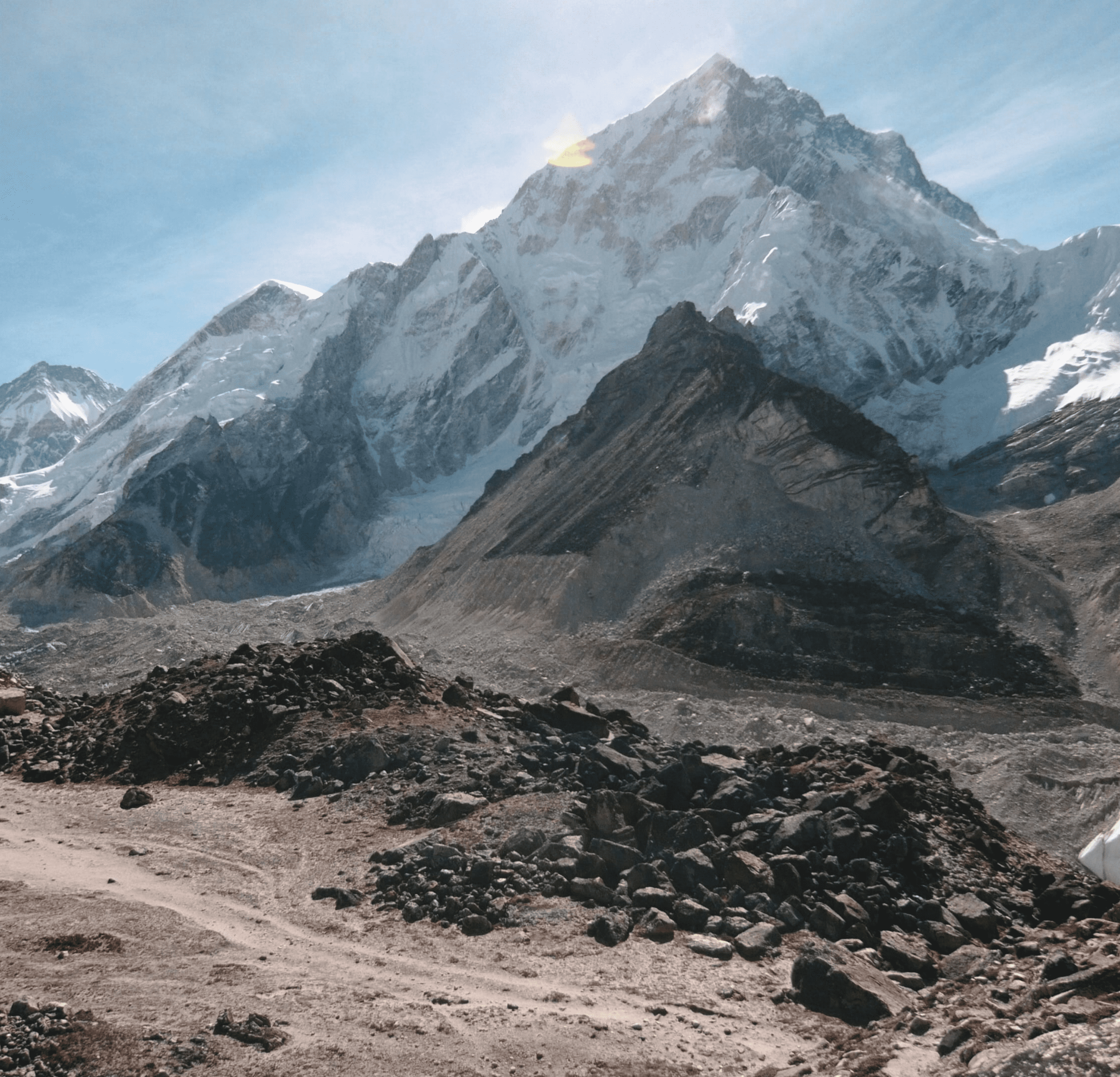
Day 13
Trek to to Muktinath (3,800m/12,467ft) via Throng La (5,416m/17,765 ft), 7-8 hrs walk:
Today is the longest and hardest day of the whole trip.
We start our walk early in the morning with a packed lunch. Here the trail becomes very steep before reaching the high camp. Walk at your own pace as the views are out of this world. You continue to walk up for another 3-4 hrs in order to reach the top of Throng La.
A short break surrounded by picturesque scenery is interrupted by the downwards hike to the Mustang part of the mountain and into Kaligandaki valley below to the West.
Finally, after 7-8 hours, you will reach Muktinath.
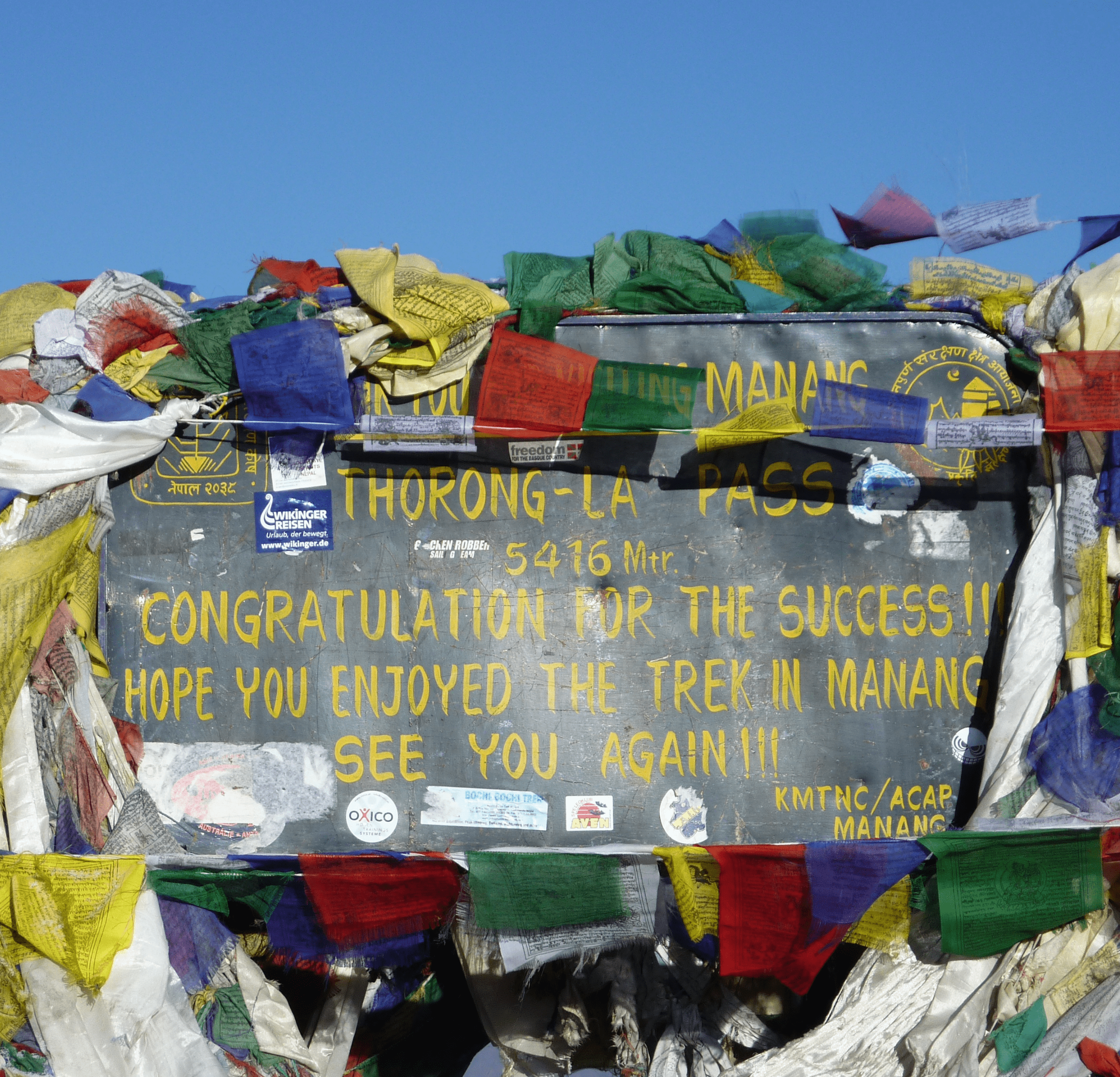
Day 14
Trek to Marpha (2,670m/8,760ft), 6-7 hrs walk:
We visit the temple in the morning and continuing our journey descending over the Kaligandaki River.
After a brief stop at Ekle Bhatti (translated as lonely teahouse), you embark on a very windy path for two hours until you reach the large town of Jomsom - another headquarter of the Mustang region.
After lunch at Jomsom, another two hours of easy walking towards the south-east brings us at Marpha for an overnight stop. Marpha is a little gem, with whitewashed houses, paved streets and numerous well-kept lodges. Here you will have time to celebrate with the local apple products like cider, brandy and apple pie.
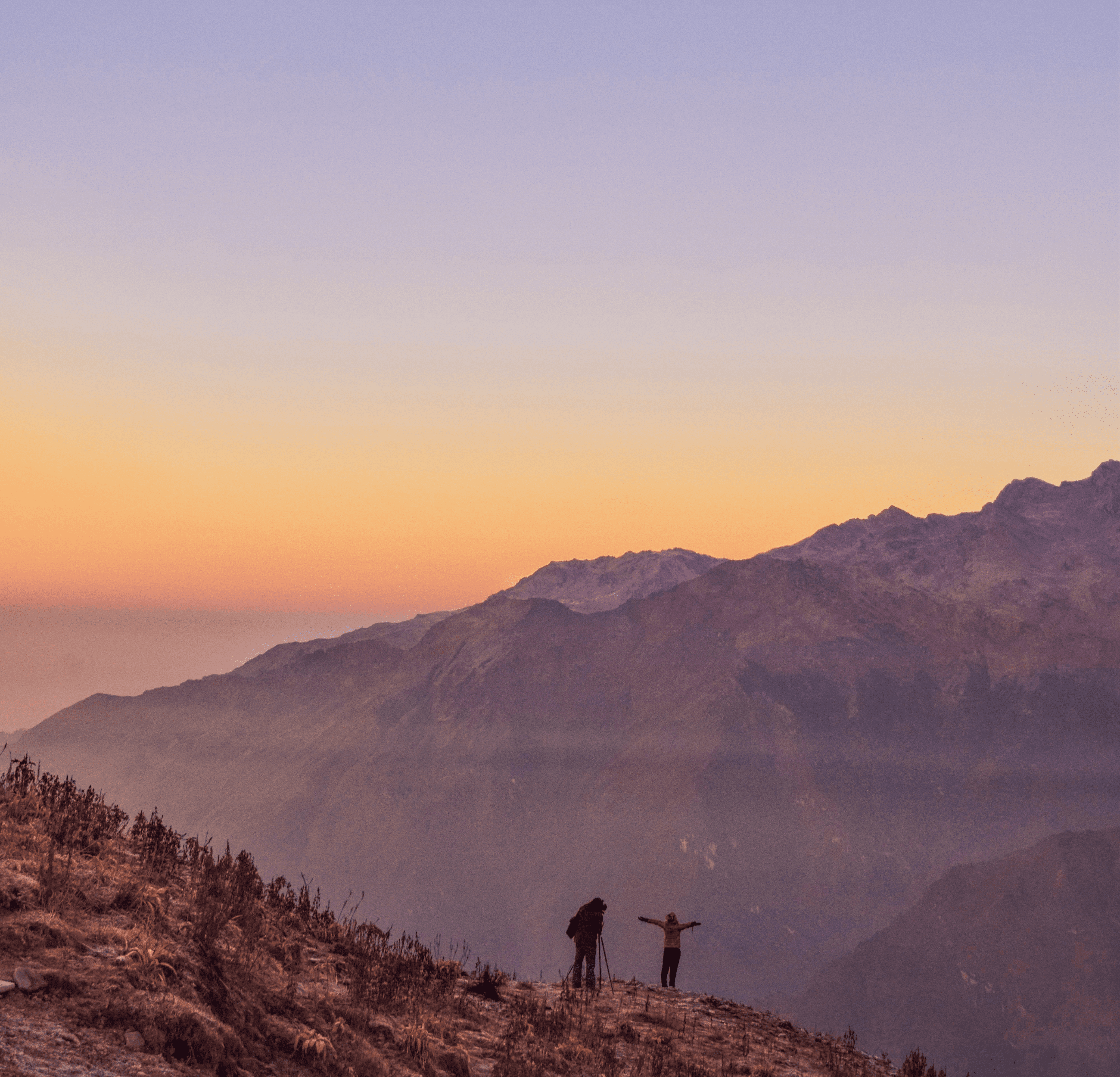
Day 15
Trek to Ghasa (2,120m/6,955ft), 6-7 hrs walk:
Today, the walk is very enjoyable.
Following the Kaligandaki river downstream, you reach another charming village called Tukuche. Boasting spectacular views of Mt. Nilgiri’s and the massive ice-falls which tumble from Dhaualgiri’s east face, you push forward for another hour into Kalolpani Village for lunch. Views of Mt. Annapurna I, Nilgiri and Dhaulagiri are all visible.
After another 2 hours of easy downhill, walking brings you to the long-settled Thakali village for an overnight stay at a lonely little lodge.
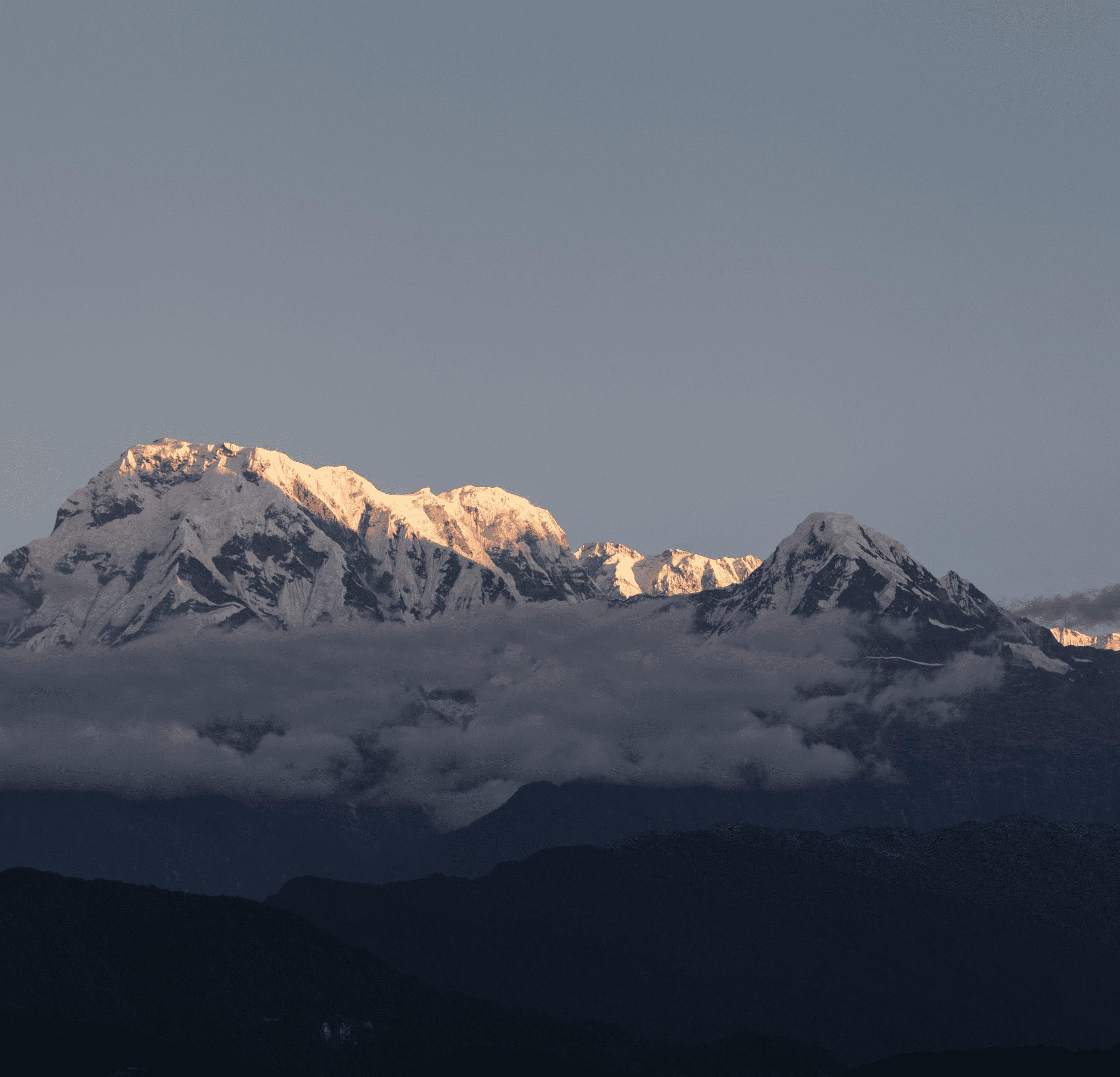
Day 16
Trek to Tatopani (1,200m/3937ft), 4-5 hrs walk
The route dramatically changes a from dry, arid desert to a pine and conifer forests full of vegetation, as you pass between the two giant peaks of Dhaulagiri and the Annapurna’s.
From Ghasa to Tatopani, you will meet the Thakali people for the first time, meaning the architectural style changing quite dramatically. This pleasant walk amidst the beautiful surrounding continues back to the terraced paddy fields and into a warm sub-tropical climate all the way to the village of Tatopani. Here you will pass the famous and beautiful waterfalls of Rupse. Coming down through Dana village (the deepest gorge of the world), you will have another couple of hours until you reach the natural hot spring baths.
Overnight stay in Tatopani.
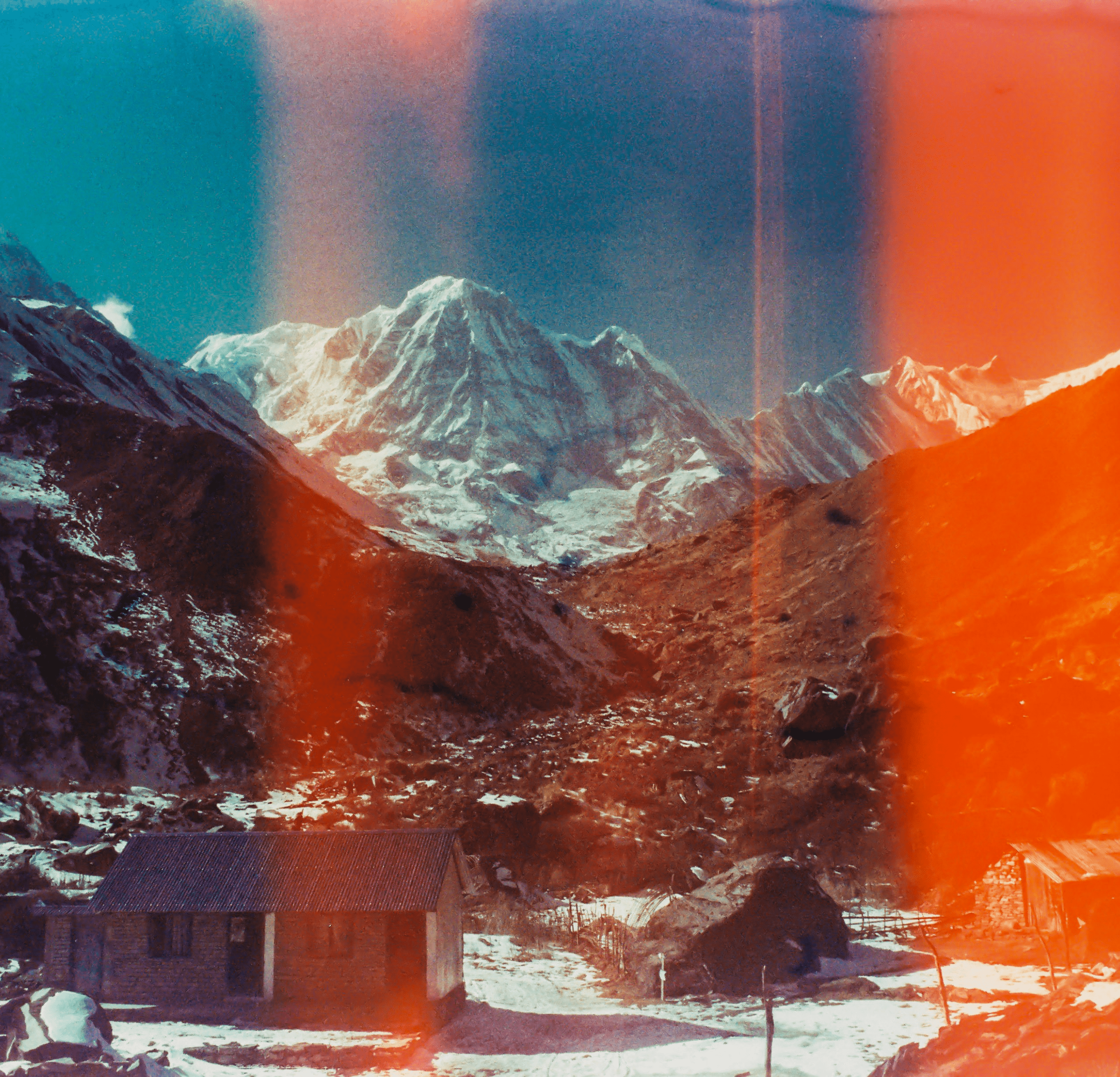
Day 17
Trek to Ghorepani (2,850m/9,350ft), 5-6 hrs walk:
After spending a wonderful morning into the hot springs, you cross the suspension bridge over the Kaligandaki river and follow the path to Beni. From Beni, there is a very steep climb to the top, which continues past farms and villages and into dense rhododendron forests before reaching Ghorepani.
This is a great place for mountain scenery.
Day 18
Poon hill hike and trek to Tadapani (2,710m/8,891ft), 5-6 hrs walk:
An early morning start will take you to Poon Hill (3210m/10530ft).
This route offers a glimpse into the pleasant rhododendron forests and boasts mind-blowing viewpoints that provide you with a stunning sunrise over the high Himalayas. The panoramic scenery shows off views of Dolpo, Mt. Dhaulagiri, Mt. Machhapuchre (Fish Tail) and the route to Manaslu. After sunrise, you head back to Ghorepani for breakfast and continue trekking to Tadapani where you stay the night.
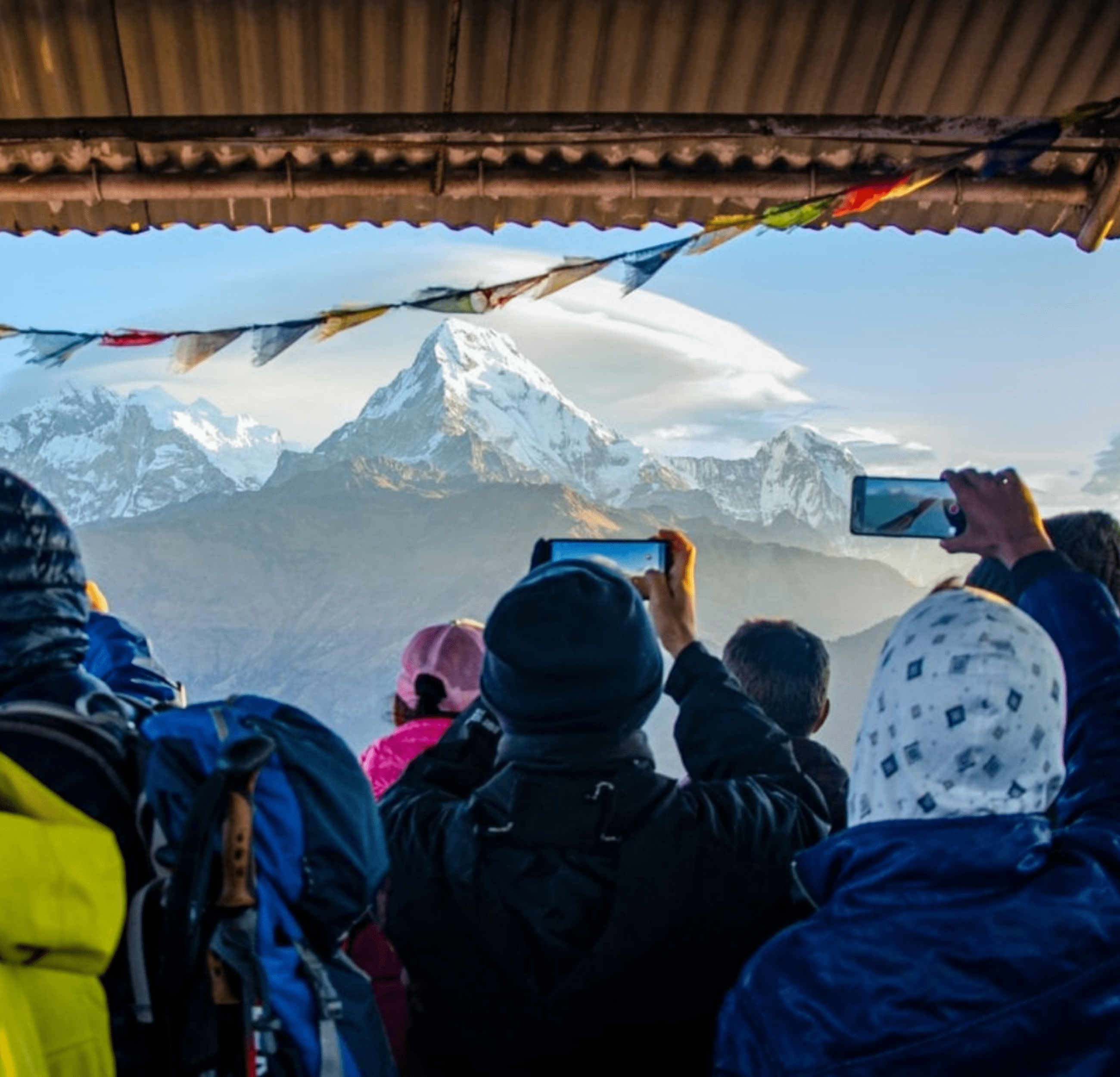
Day 19
Trek to Pokhara (823m/2,700ft), 5 hrs walk & 1 hrs drive:
This is the last day of trekking. The track leads you through scenic landscapes and local villages before you find yourself descending dramatically until you get to Ghandrung village for lunch. This is a heavily settled Gurung village, which has now been turned into a modern village (for Nepal standards).
Another easy path arrives you in Birethanthi for lunch. After another half an hour flat walk, you will reach Nayapul. Your trek ends here and we will drive you back to Pokhara for the night. Here you're free to explore the lakeside and simply relax in the heart of Town.
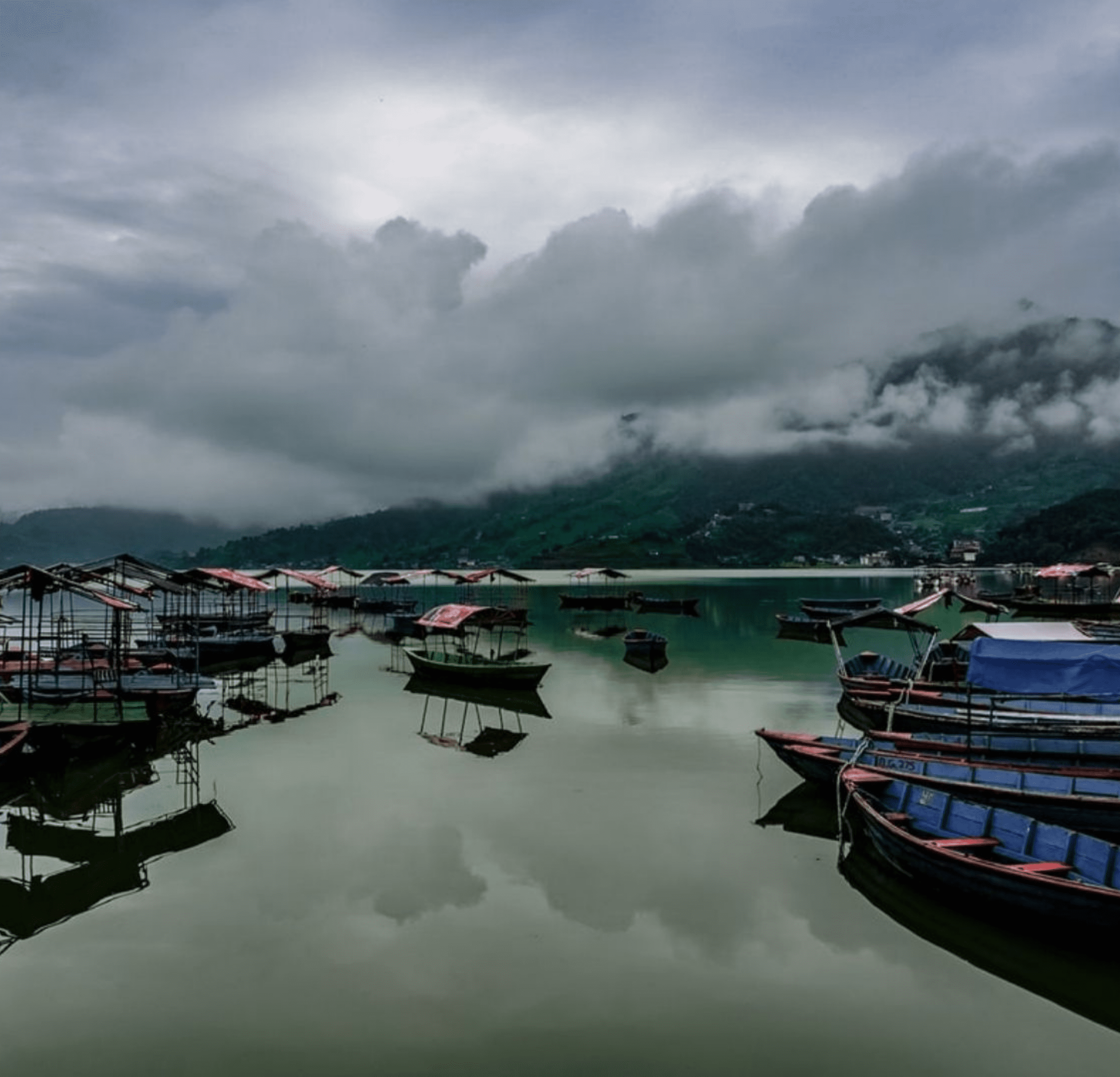
Day 20
Drive to Kathmandu (1,300m/4,264 ft), 5-6 hrs drive:
An early morning drive will take you back to Kathmandu. On arrival in Kathmandu, our guide will transfer you to the hotel where you can rest. Our manager will meet you in the evening then take you for the farewell dinner.
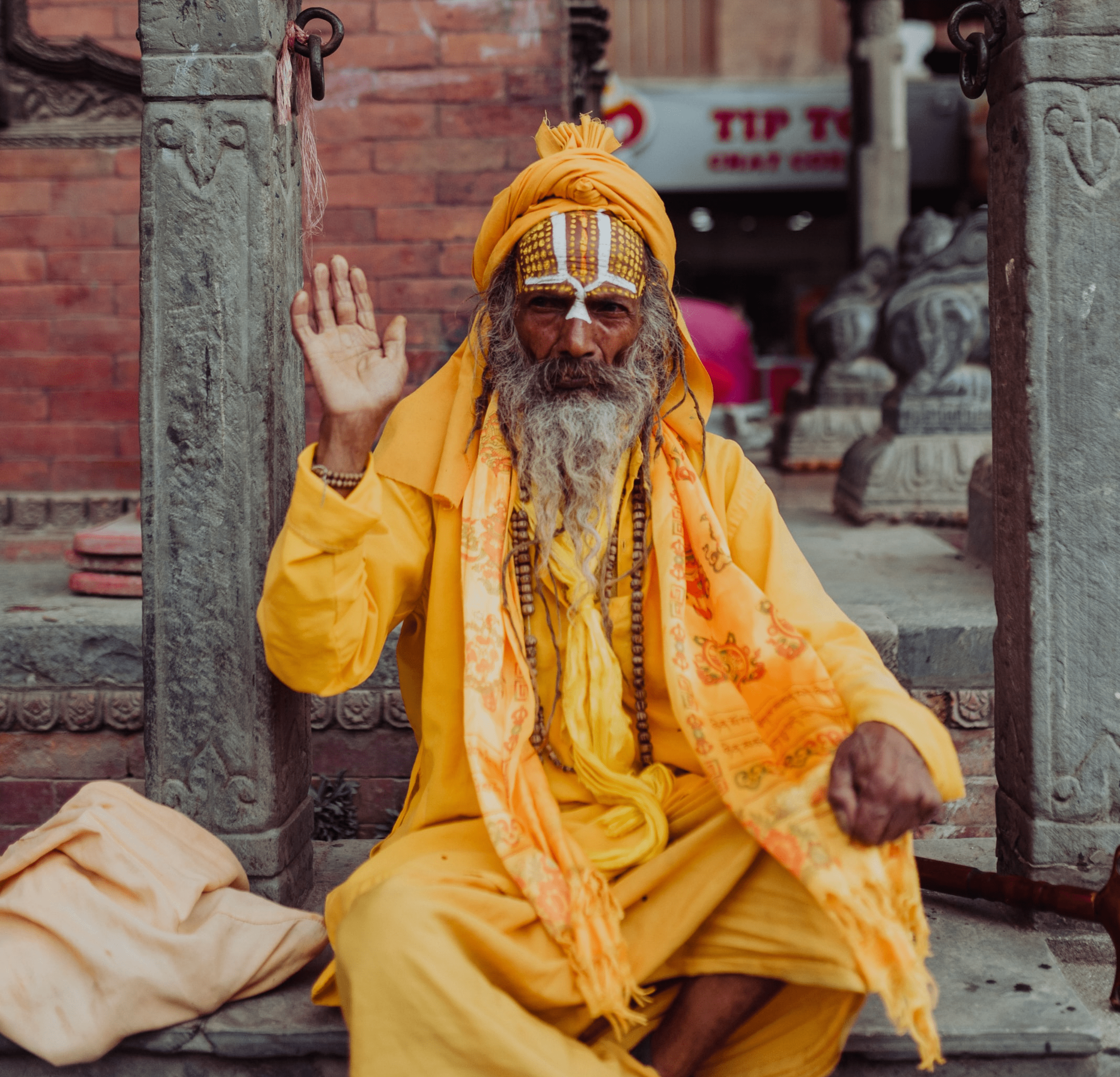
Day 21
Departure from Kathmandu:
Departure for home. Today our driver will drop you at the International Airport for the final departure if you wish.
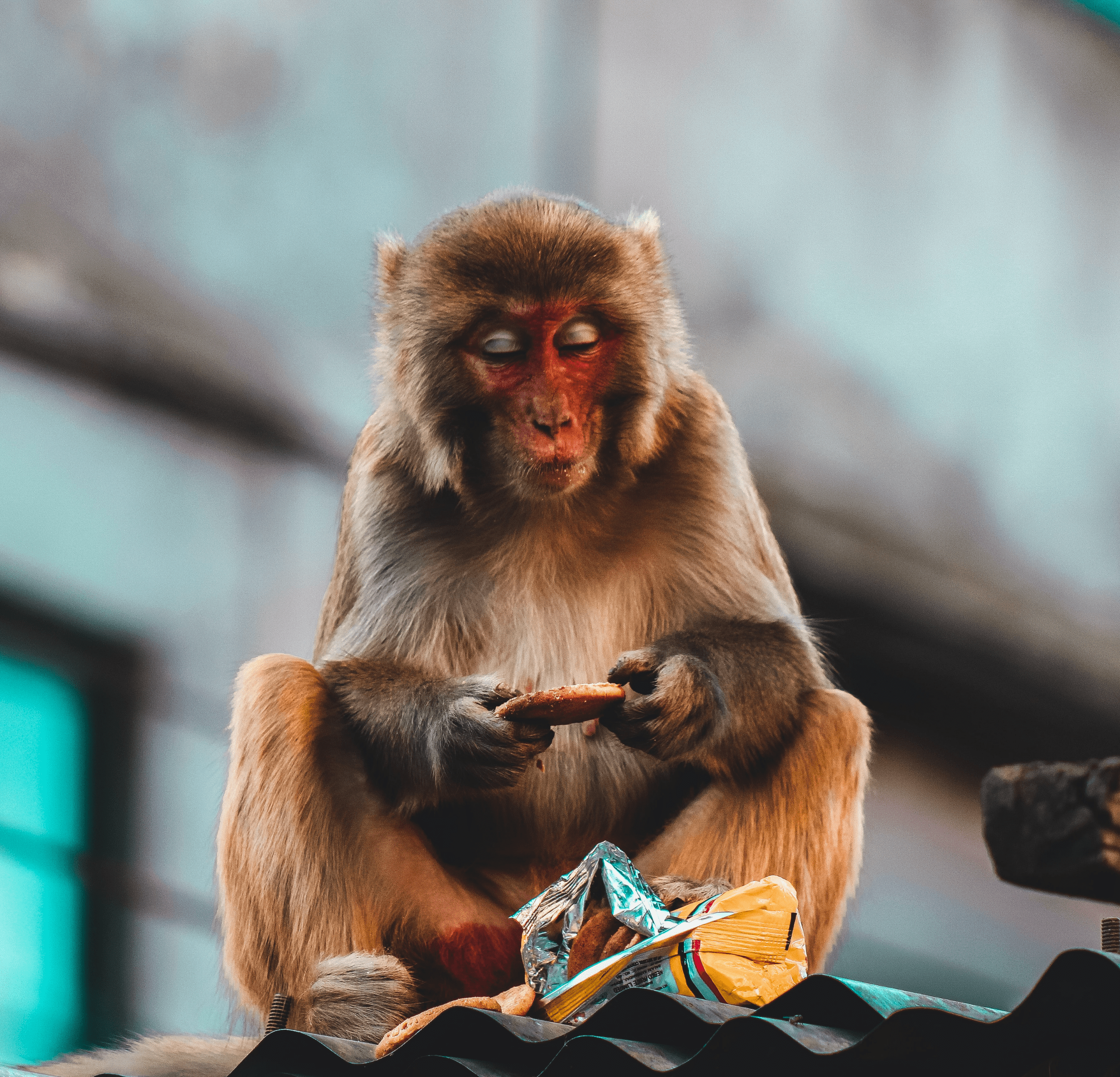
Accommodation
Included
- All Ground transportation.
- Three nights accommodation between Kathmandu and Pokhara - twin sharing tourist standard hotel (Bed and Breakfast)
- Full board meal 3 times a day (B+L+D) during the trek days including tea & coffee (served in a cup).
- English speaking trekking guide who has been authorised by the government and the necessary number of porters (According to the group size) with their insurance, salary, accommodation and meals.
- Welcome and farewell dinner in Kathmandu with a Cultural show. (Ethnic music and dance)
- All the necessary official documents, TIMS Permit, Trekking Permit etc.
- Sleeping bags and down jackets if necessary.
- First Aid kit.
- Trekking Route map.
- Insurance of Guide and Porters.
- All require local and government tax.
Excluded
- Nepal Visa fee and International flight.
- Breakfast in Kathmandu.
- All personal expenses such as bar bills, water, extra tea/coffee, snacks, battery re-charge, laundry service, etc.
- Personal clothing and gears.
- Tips to guide and porters.
- Cost raised by flight cancellation, emergency rescue charges, landslide, weather, political unrest, illness, re-routing etc which are not under our control.
- Monument entrance fees.
Essential Information
Annapurna Circuit Trekking Guide:
Please click here to recieve the full Annapurna Base Camp trekking guide.
This article give you a full, in-depth insight into the Annapurna region as a whole; touching on the climate, culture and traditions, travel dates, training advice, altitude sickness, a full route breakdown and much more.
What is Altitude Sickness & Will I Get It?
Altitude sickness symptoms occur when the rate of ascent into higher altitudes is too quickly that the body doesn’t get time to acclimatise. Altitude sickness generally develops at elevations higher than 2,400 meters above sea level. The most common cause of altitude sickness is ascending too quickly, therefore, the main way to avoid altitude sickness is allowing the body to get used to the altitude slowly (Acclimatisation). Remember, this is not a race - look up and smell the roses!
Our professional guides will be monitoring you constantly throughout the trip, therefore, symptom checks will be a regular occurrence. It is important to be aware of the normal altitude symptoms that you may encounter, so please familiarise yourself with signs and symptoms before you depart and be very vocal about your own health during your trek. We will send you a full need to knows list at the time of booking!
If you are feeling nauseous, dizzy or experience other symptoms, please be sure to let your local guide know immediately so that we can monitor your condition.
[Click here to learn more about altitude sickness and how to avoid it] (http://)
How Fit Do I Need To Be & Do I Need To Train?
The short answer is: a basic level of fitness and good health is needed and training is highly recommended. However, you do not need to be a professional athlete or a marathon runner. What is going to get you to the end of your challenge is a mental and emotional commitment to the cause. As long as you set time aside to prepare for the challenge ahead, success will be on your side!
Accommodation:
Hotels (3 nights), teahouse lodges (12 nights).
About Accommodation
A tea house is the combination of a guest house, restaurant, and social hang out. Private rooms are available in most tea houses, except for high altitudes ones where it will be just dormitories. The lodges are fairly basic and the rooms are small with twin beds. Blankets are generally provided, while most bathrooms are shared and toilets will either be squat or western style.
The majority of tea houses only have cold showers, however, a few may have hot water available at an additional cost. Nonetheless, we discourage groups from using water heated by wood, as lack of firewood in villages is a big environmental concern in Nepal.
There is a large dining room / communal-lounge, warmed by the Bukhara stove (an iron cylinder, fitted with a chimney duct, in which a log fire is lighted). You will spend most your evenings in here socialising with other trekkers from around the world!
There is normally no electric lighting in the bedrooms unless the village has hydroelectric power. Some tea houses now also have electricity for charging small appliances - mobile phones and cameras - and there may be a small charge for this.
Weather:
Weather conditions in the Himalayas can change rapidly and your designated tour leader may be forced to change the trip itinerary accordingly. Travellers need to be prepared for all weather conditions.
While our itineraries are designed to allow for adequate acclimatization you are likely to feel the effects of altitude sickness and oxygen deprivation whilst on this trek. Please be aware that your tour leader may deem it unsafe for you to continue trekking at any time, and arrange for you to descend to a lower altitude.
Hopefully, weather delays will not occur, or if they do it will be for a limited time. Should the delays stretch into days and neither helicopter nor flight are a viable option, a collective decision will be made by the group on how to proceed. This is especially true if the delays are prior to the trek, as the original trek may no longer be feasible. Your Tour Leader will be there to help with this process.
Visa:
All foreign nationals (except Indian passport holders) require a visa to enter Nepal. Visas are obtainable from embassies abroad, land borders (including borders with India & Tibet) and on arrival at Kathmandu's Tribhuvan Airport. Getting a visa at the airport or land borders can take time due to long queues. There have been instances when travellers are asked to show proof of exit from the country, ie flight tickets- although this is uncommon. You will also need to provide one passport photo and payment should be made in US dollars (Other currencies are also accepted but rates will differ).
Please check with the relevant visa office before departure to make sure there has been no change: https://www.gov.uk/foreign-travel-advice
The following costs here correct at time of writing:
- Single entry visa valid for 15 days - US $25:
- Single Entry Visa for 30 days - US $40
- Multiple entry visa valid for 90 days - US $100
Please Note: Your visa application form may require you to state the dates on which you enter and exit the country. GoKo recommends that you list your date of entry a few days before, and date of exit a few days after your intended dates in case you encounter any delays or problems en route.
Travel Insurance:
Travel insurance is compulsory in order to participate in any of our trips. When travelling on a group trip, you will not be permitted to join the group until evidence of travel insurance has been sighted by your Tour leader/ local representative, who will take note of your insurance details and emergency contact number. We strongly recommend that the policy also covers personal liability of luggage, cancellation, curtailment and loss and personal effects, alongside covid-19 cover.
If you would like to obtain cover for your trip please feel free to contact specialist Insurance Brokers, Campbell Irvine Direct for a quote. GoKo Travels is an Introducer Appointed Representative of Campbell Irvine Ltd who are Authorised and Regulated by the Financial Conduct Authority .
Covid-19:
Please click here to learn more about what we do to keep you safe while on a GoKo run tour.
For more up to date information regarding the current travel restrictions within Nepal, please click here
Additionally, you can email: info@gokotravels.com and a GoKo Travel Manager will get back to you as soon possible with all the relevant information.
Travel With Confidence:
Due to the ongoing impact of COVID-19, the safety and wellbeing of all of our travellers, leaders, suppliers and staff remains our top priority. Not only have we updated our booking policies so you can flexibly amend booking arrangements before departure and get the most out of your holidays while away, we have also introduced new measures and safety guidelines so you can travel with GoKo Travels safely and securely.
What does this new booking policy mean for me?:
Fully Flexible bookings for peace of mind - We understand that sometimes plans change. That’s why GoKo Travels have updated our booking policies, so you now have full flexibility to change your travel plans if needed.
Our flexible booking policy includes:
(a) Free date changes up to 45days prior to departure - with no interest or added fees
(b) Full refund giving if you have to cancel the trip due to any COVID-19 related issues or international restrictions.
(c) You can now lock in your trip with a small refundable deposit and then pay the rest in instalments whenever you like, with no interest or fees.
Photo Gallery
Book with Confidence
-
Full Flexibility
Free date changes and cancellations up to 45-days before departure on the majority of our holidays
-
Your Money is Safe
Full financial Protection on all of our bookings so you can travel with piece of mind.
-
COVID-19 Commitment
Full refund given if you have to cancel the trip due to any COVID-19 related issues or international restrictions.
-
Travelling Safely
When you travel with us you can be confident that all of our holidays meet COVID-19 safety regulations.
Giving Back
As part of our commitment to preserving planet earth, we donate 3% of our profits to GoKo Travel's registered non-for-profit, "The GoKo Earth Preservation".
The GoKo Earth Preservation has been set up to protect and preserve the natural habitats of our planet and to conserve and enhance the biodiversity of threatened environments and endangered species around the globe. This is achieved through rewilding, reforestation and marine conservation projects, alongside local community support.

Securing A Rainforest Reserve
Support the purchase of our very own GoKo Rainforest reserve - preserving biodiversity and protecting endangered species in the world's most important habitat.
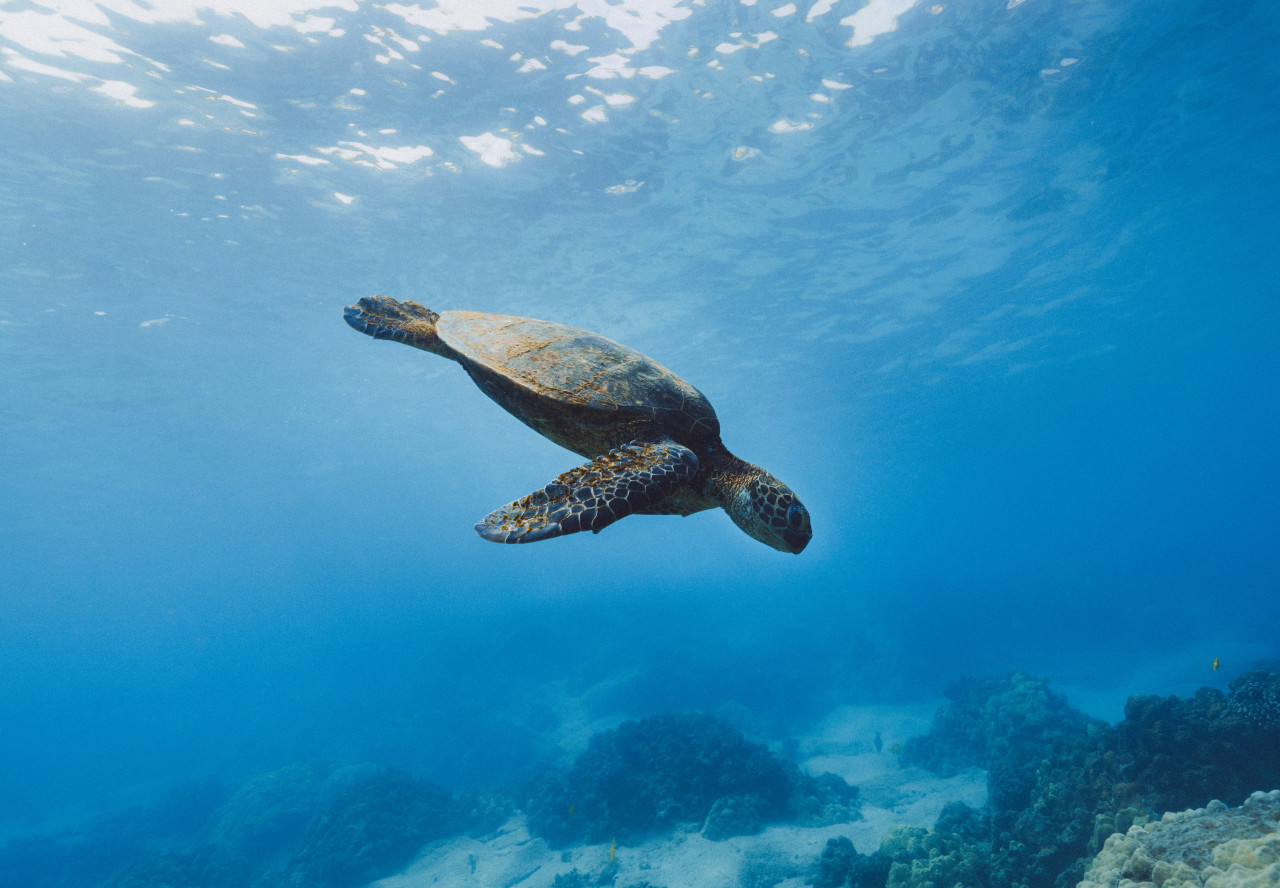
Assisting Marine Conservation
With your help, we can buy boats to support marine conservation; securing the future for our fragile oceans and the wonderful beings that inhabit them.
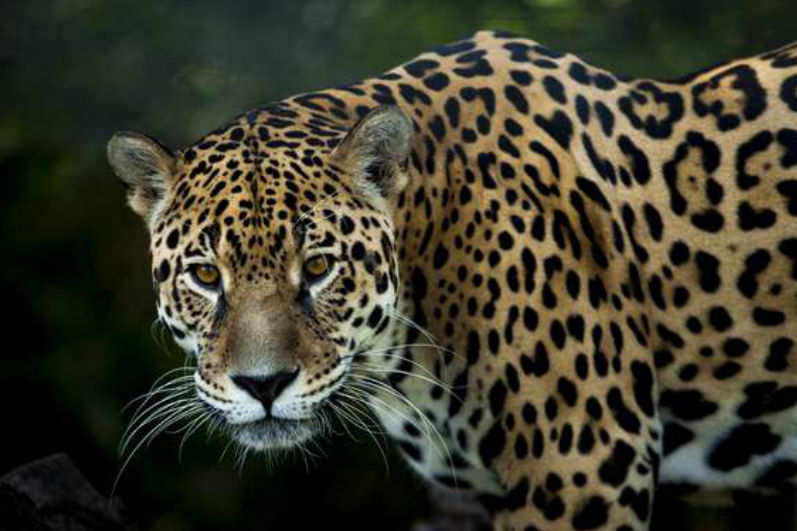
Creating New National Parks
By helping with the creation of new parks, we can support local economies, empower native communities and put healthy landscapes into permanent protection.
Looking to Carbon Offset?
Although all of our GoKo holidays promise to warm your hearts, we don’t want it to contribute to warming the planet.
Upon request, we can help you go Carbon Neutral. Thanks for our contacts, we can support a 3-step carbon offset scheme to calculate and neutralise your holiday footprint, allowing you to travel conscious free. This covers every step of the journey where you travel with us, from international flights to hotel heating, transport, food and more.
If requested, the GoKo Carbon Offsetting scheme does not focus on just planting trees, but rather the purchasing, persevering and protecting standing forests from deforestation and degradation - helping revive forests back to full health and avoiding the release of stored carbon. This also enables the regeneration of degraded habitats, which gradually re-absorb atmospheric CO2.
Inspirational Travel
Navigating 2024: The Top 10 Travel Trends for Luxury Wanderlust
As an expert in luxury travel, I've always seen travel as more than just the destinations—it's about immersive experiences, personal stories, and the perfect blend of adventure and comfort. As 2024 unfolds, the luxury travel landscape is evolving rapidly, with...
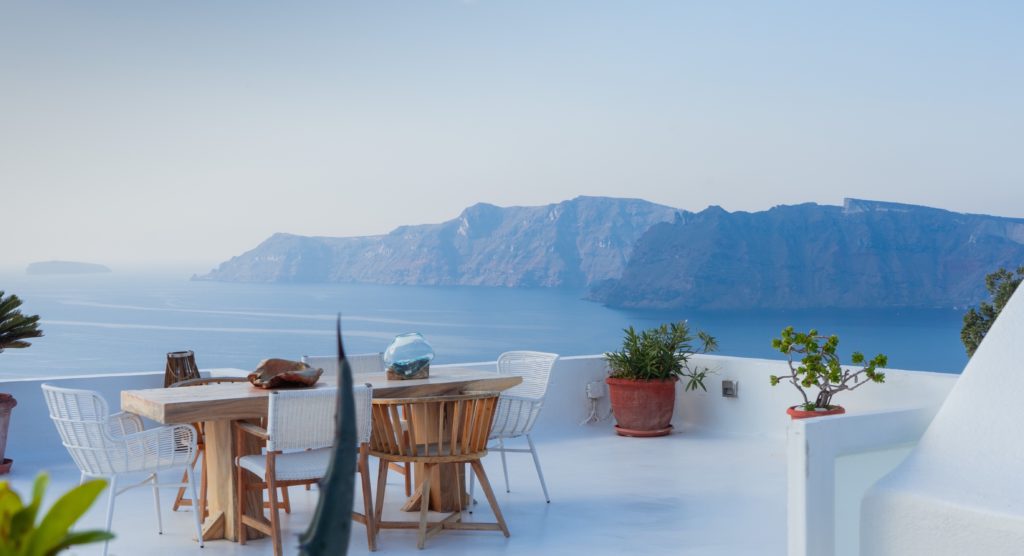
Top Tips For Maximising Your Luxury Travel Experiences During A Cost of Living Crisis 2023
Luxury travel is an experience that many people dream of, but few get to fully enjoy. From exclusive accommodations and fine dining, to unique experiences and breathtaking landscapes, luxury travel offers the chance to escape the everyday and indulge in...
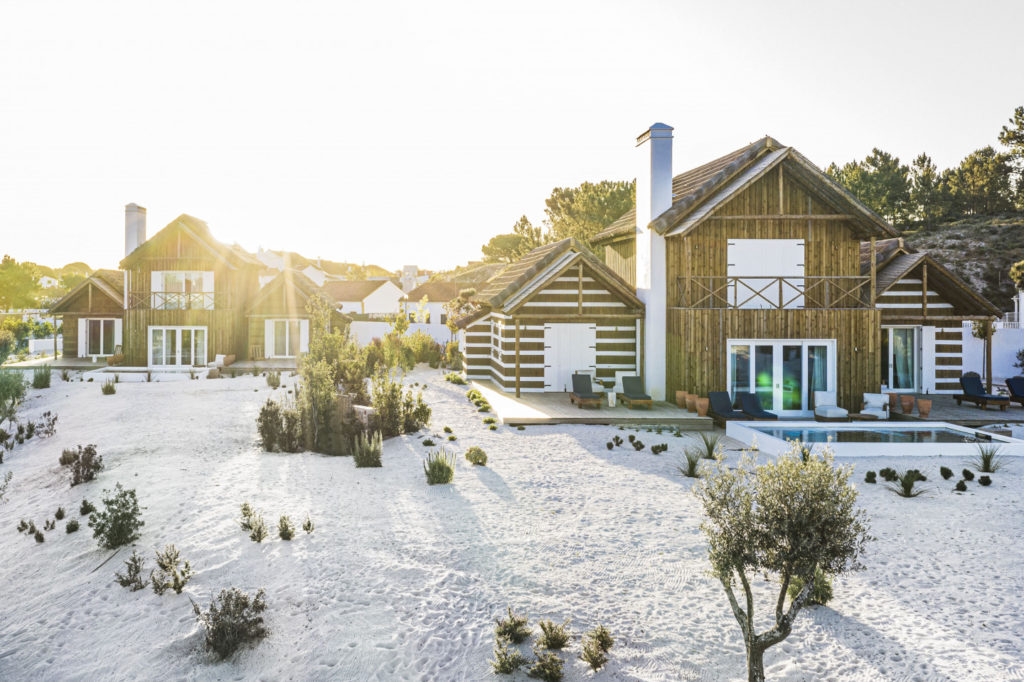
The 10 Best Luxury Eco-Hotels For 2023
With each new year that passes, the natural environments in which we travel too are becoming more scarce and fragile. It follows that, in recent years, we have begun to see travellers become more aware of their environmental impact, and...
